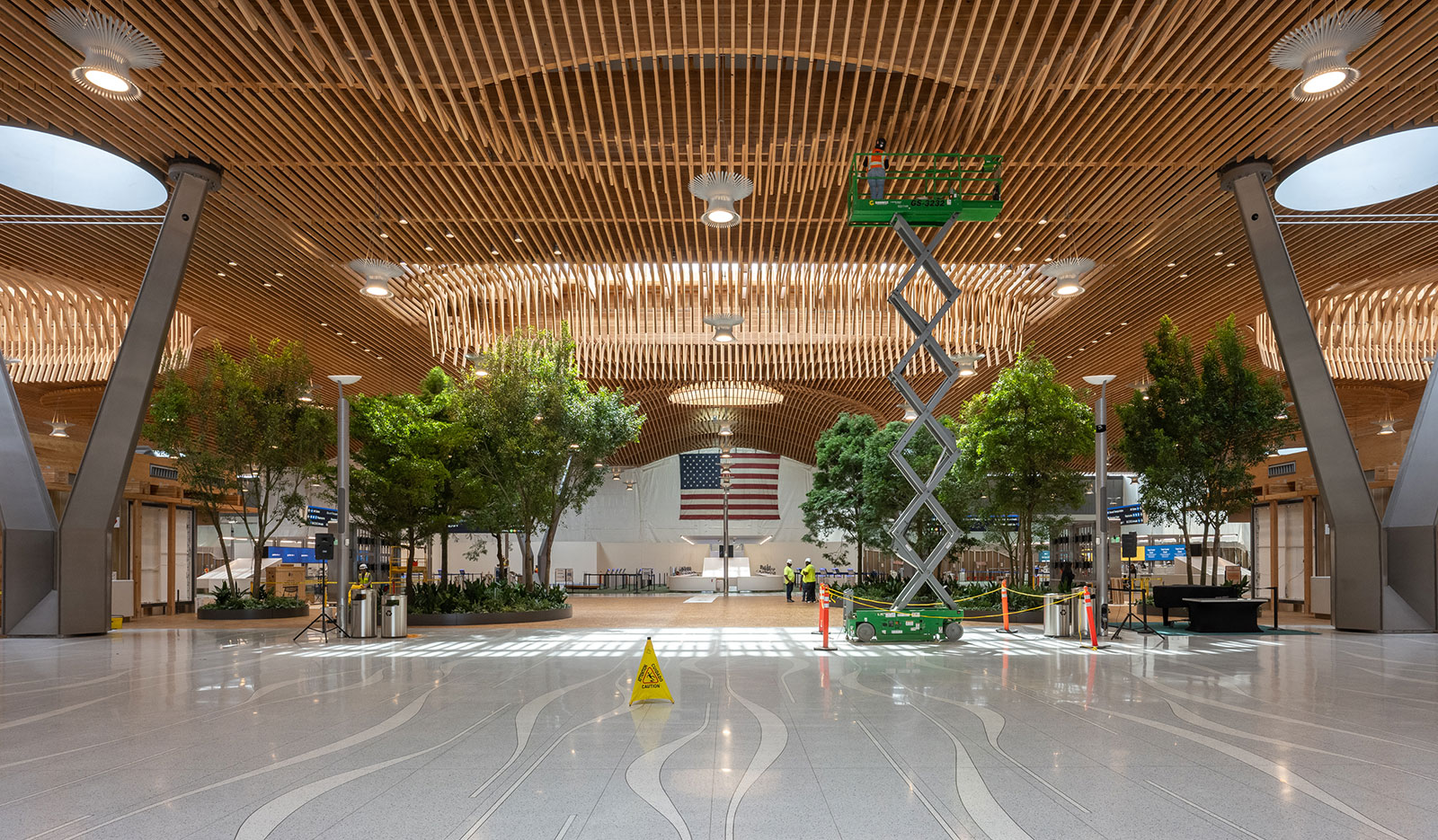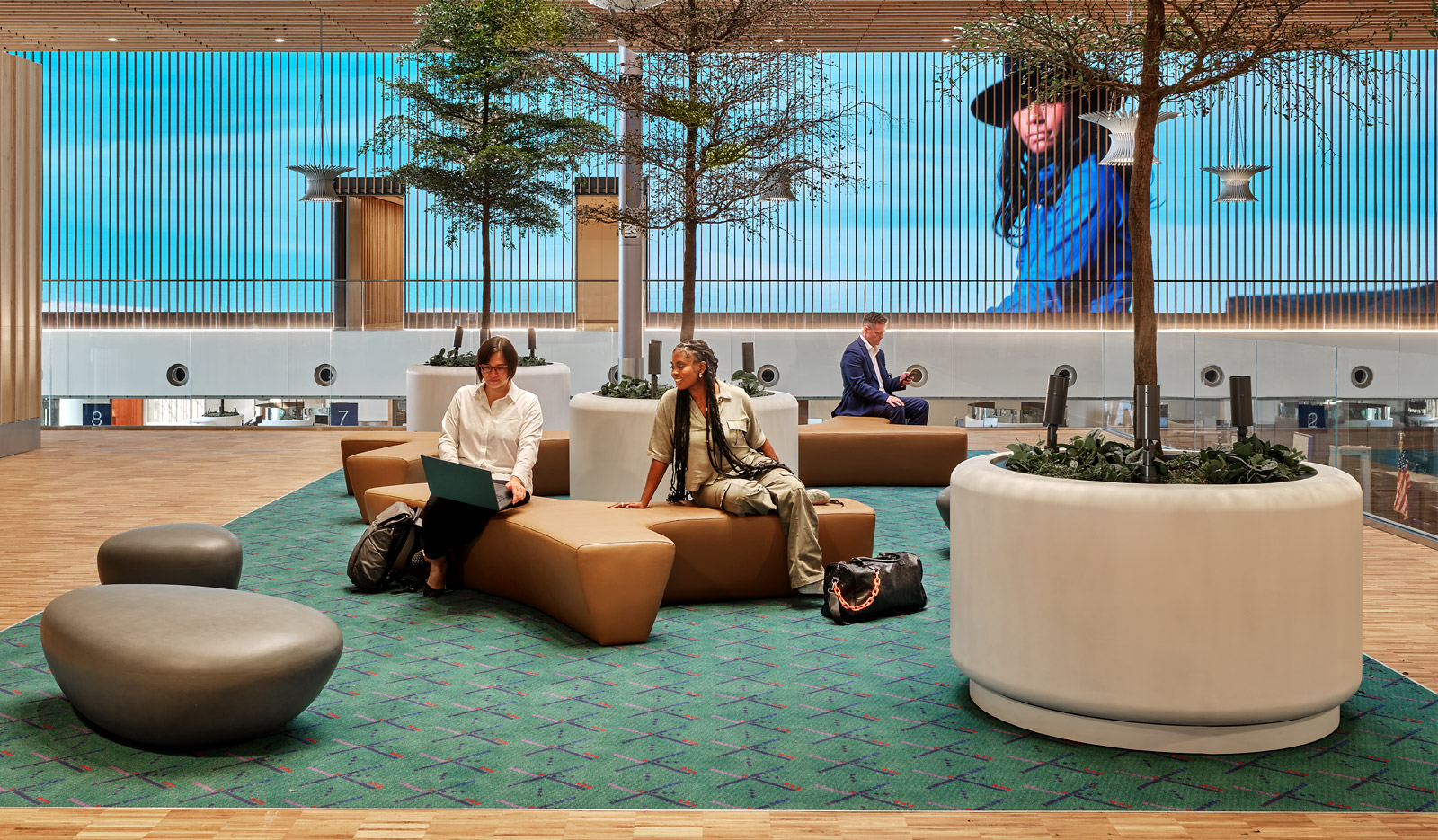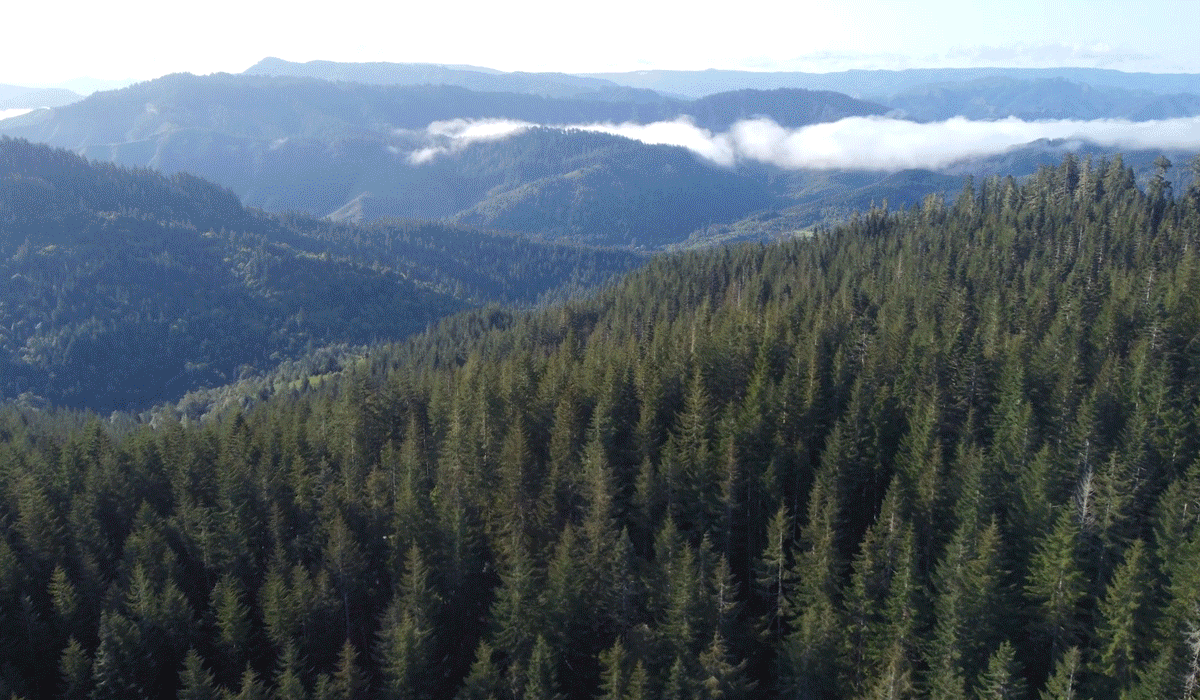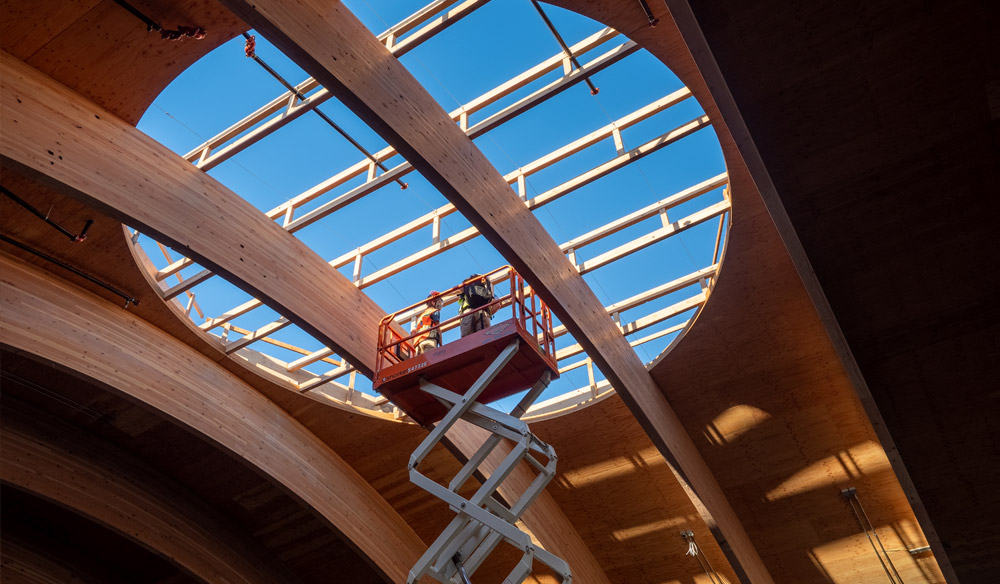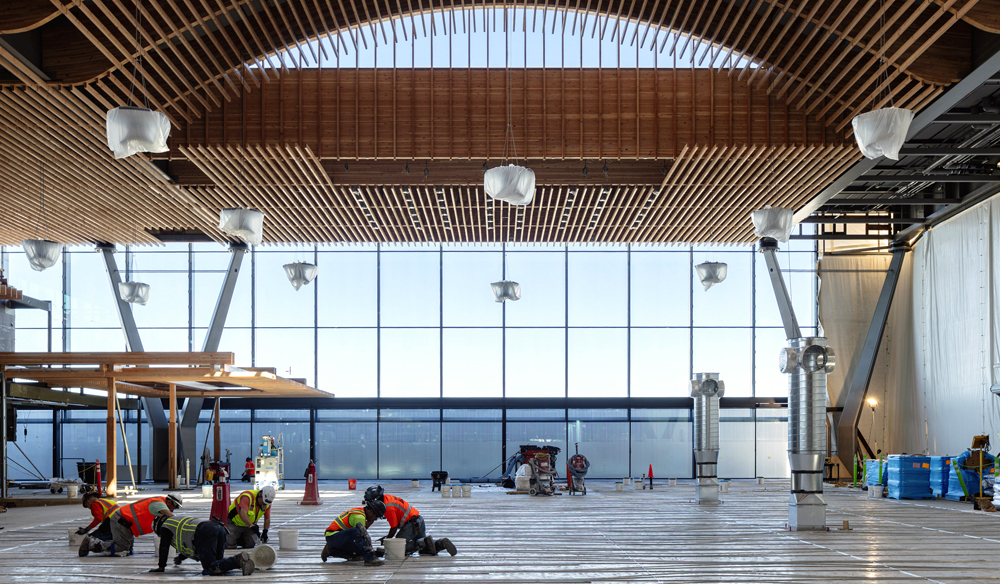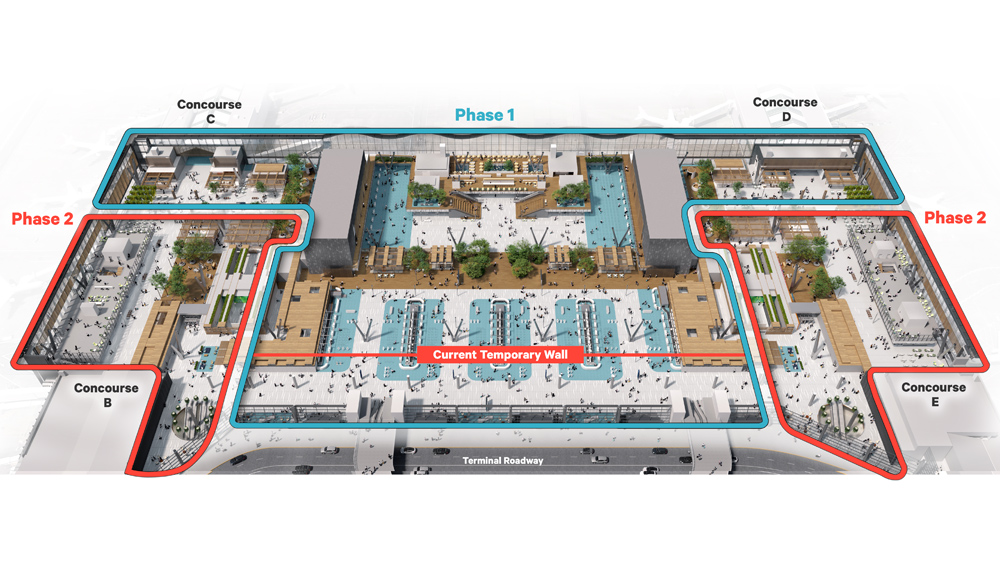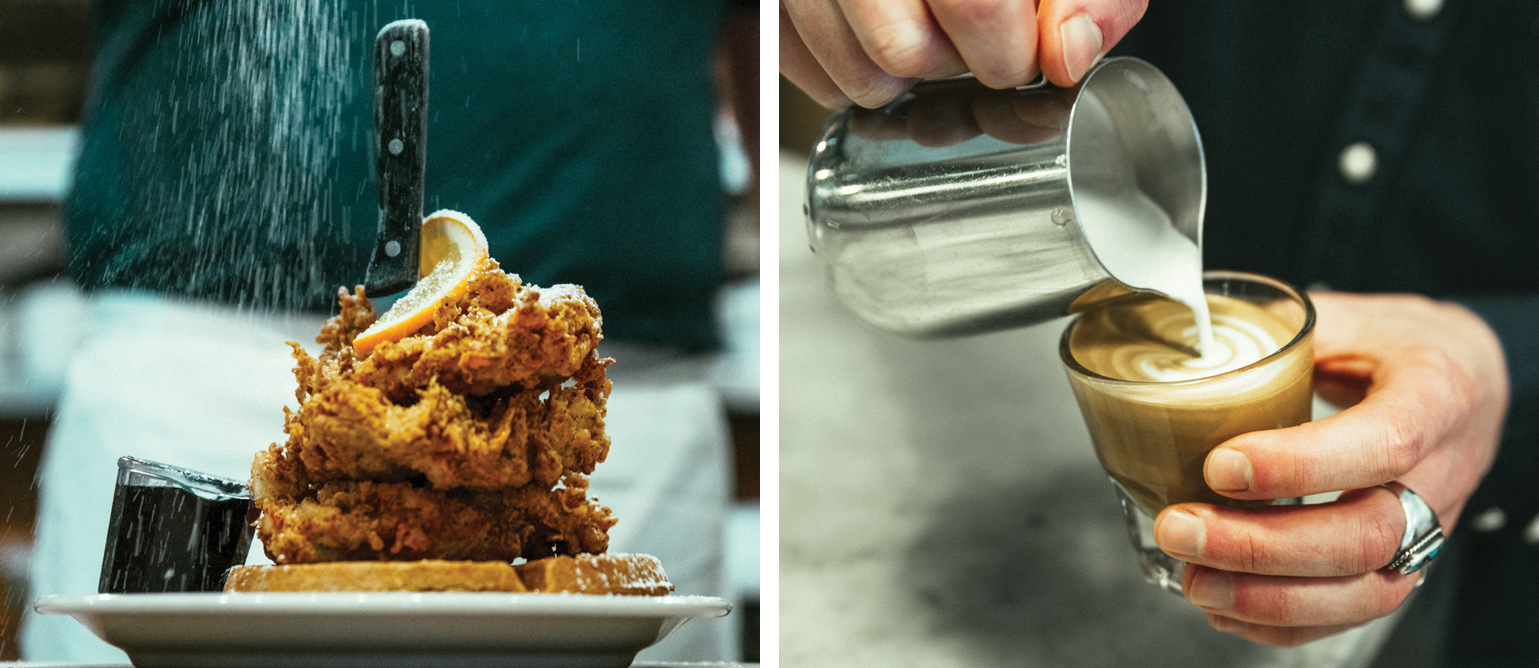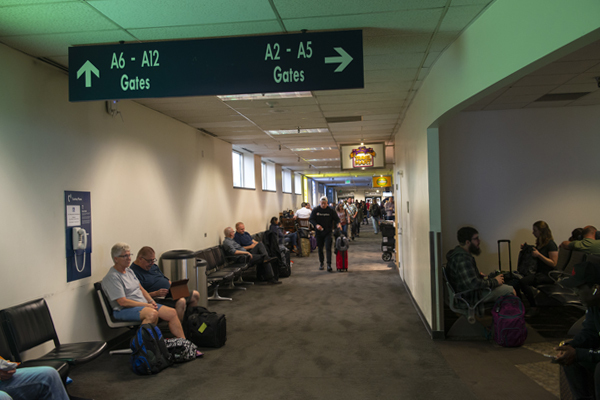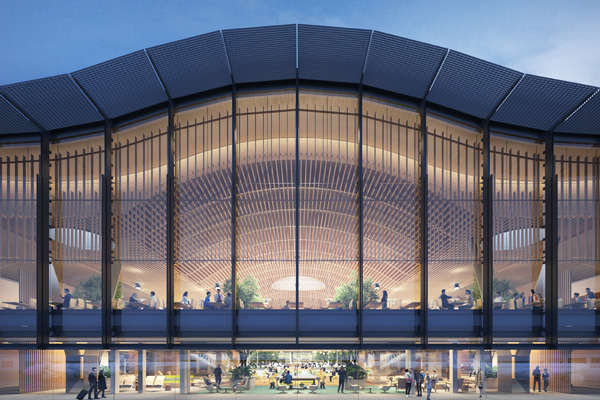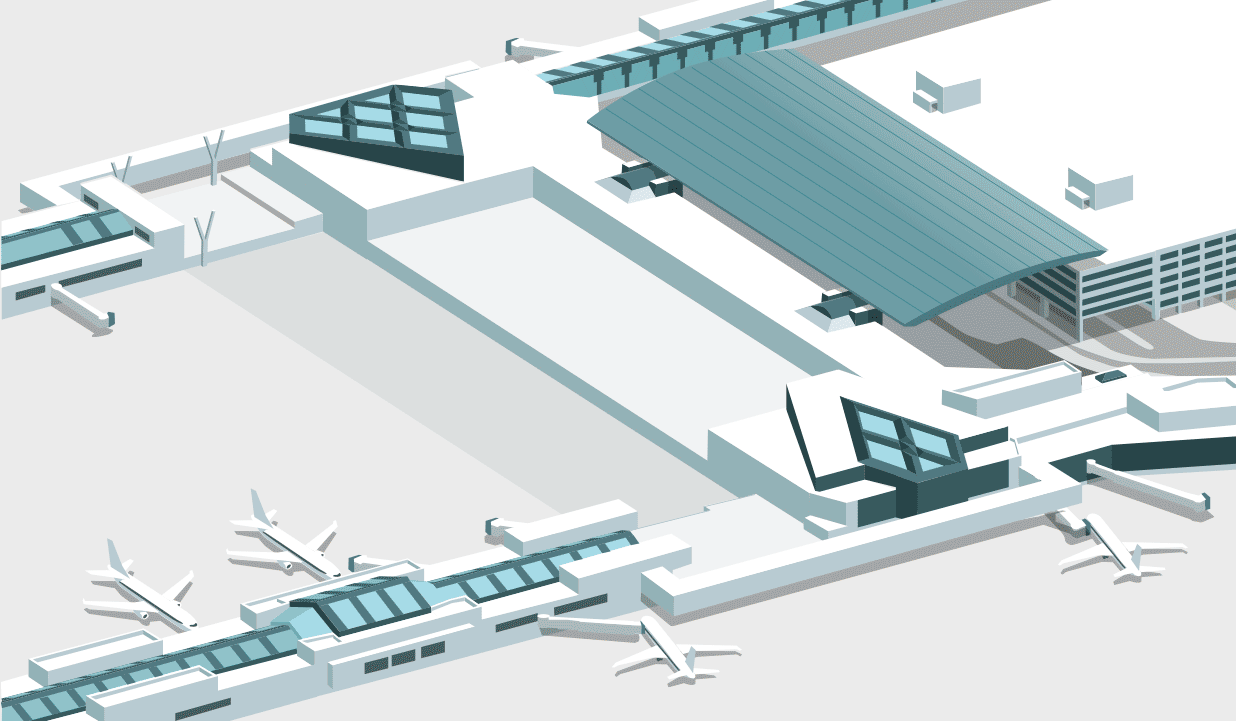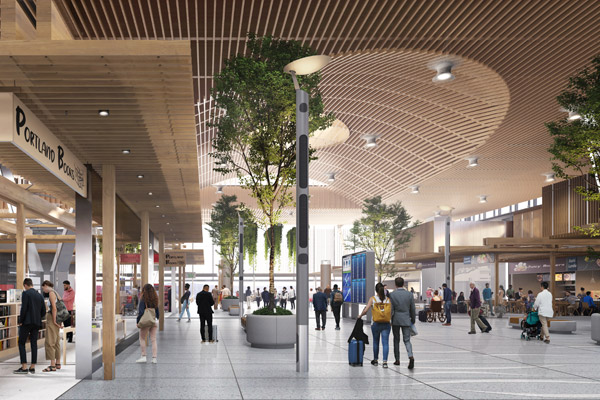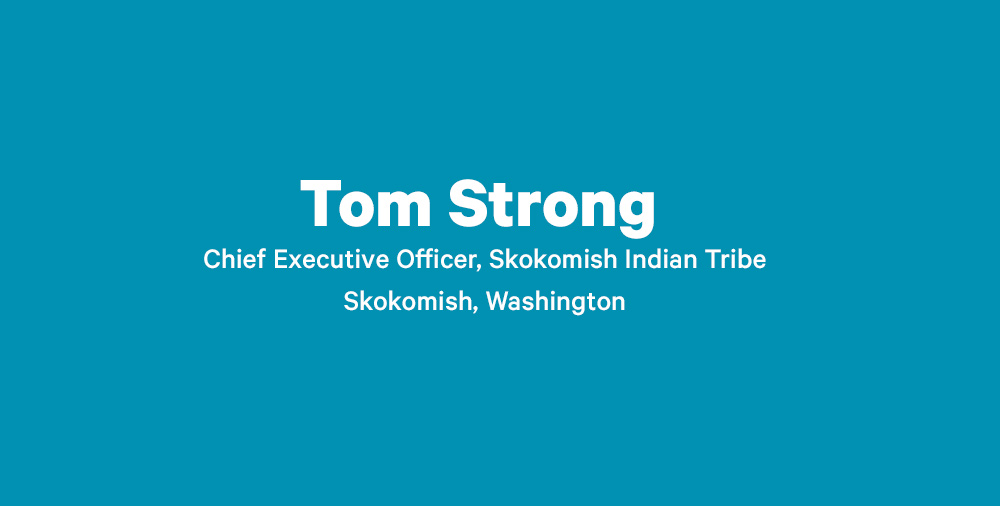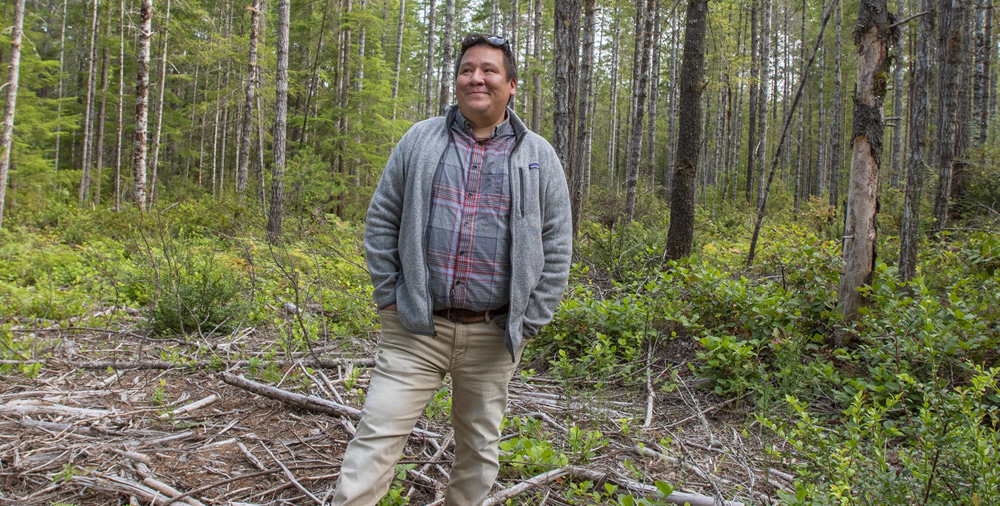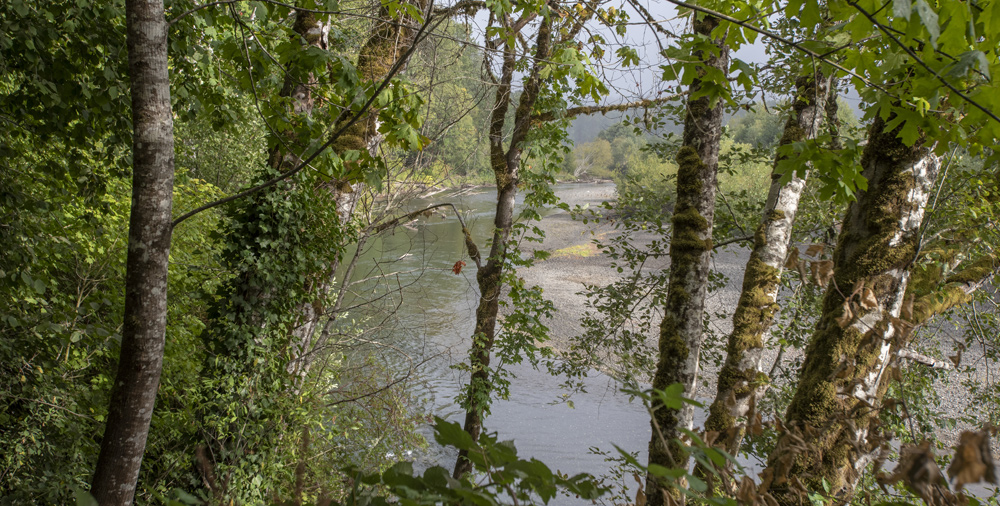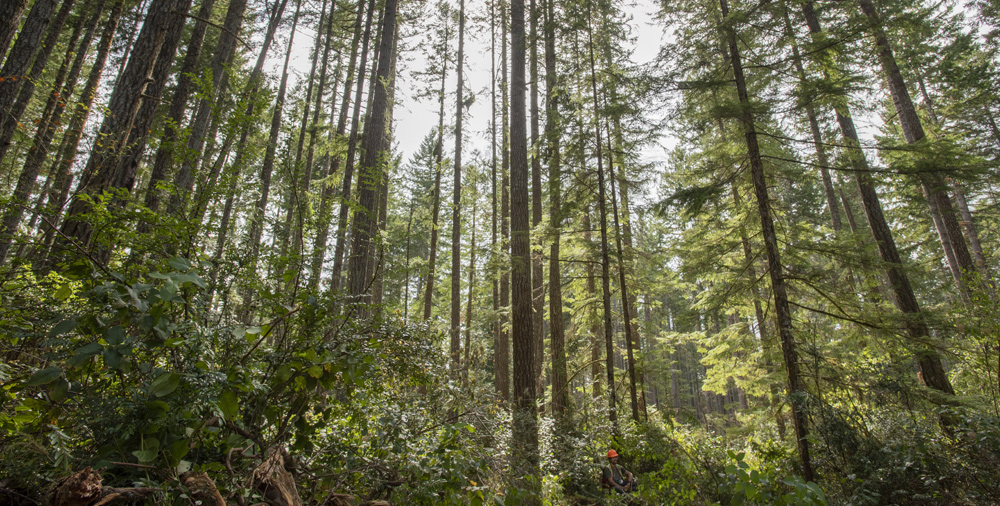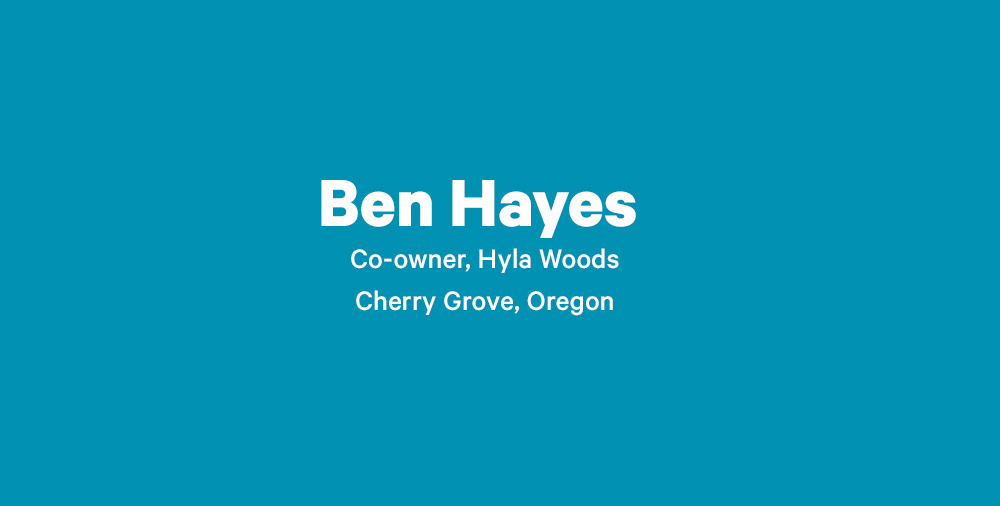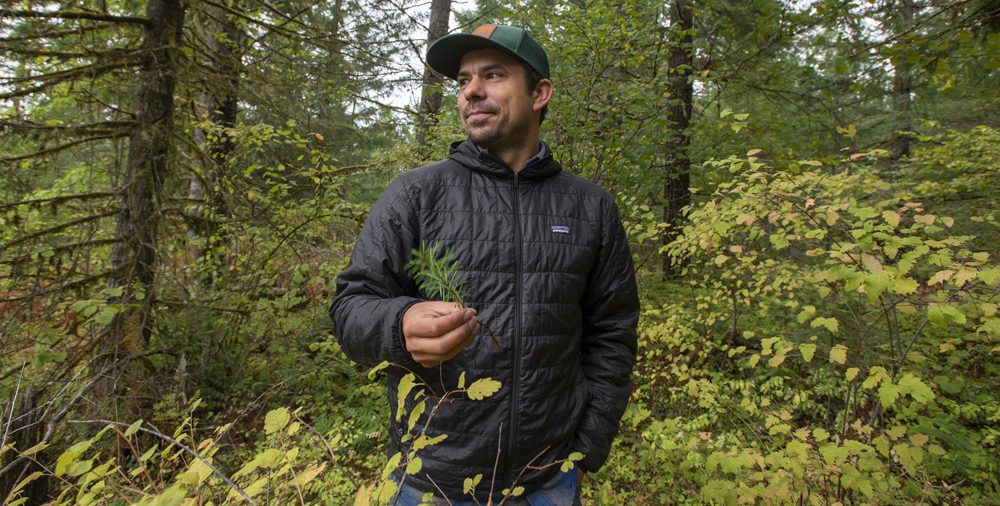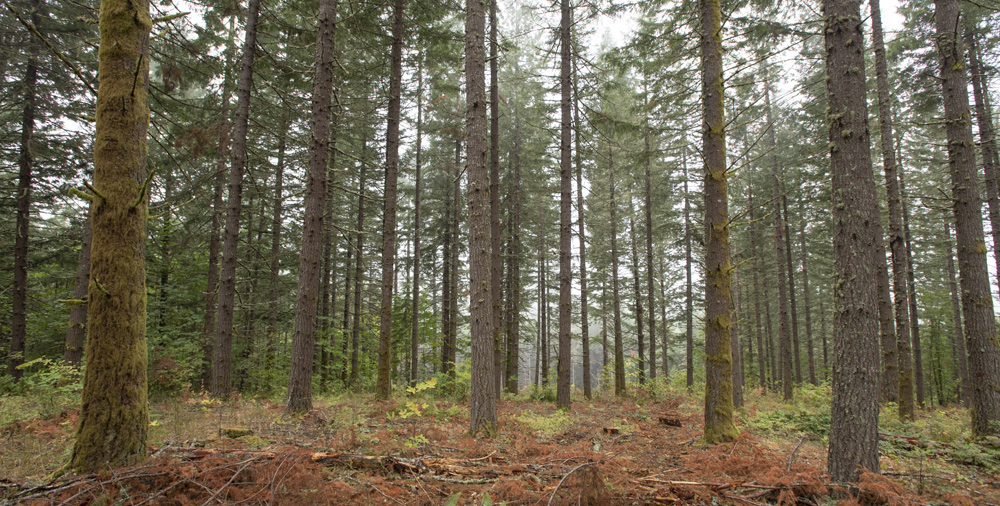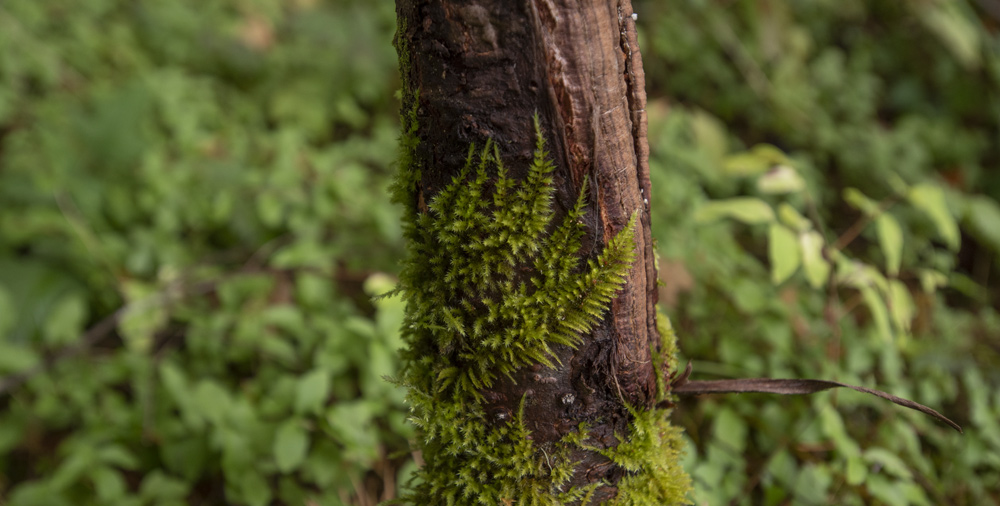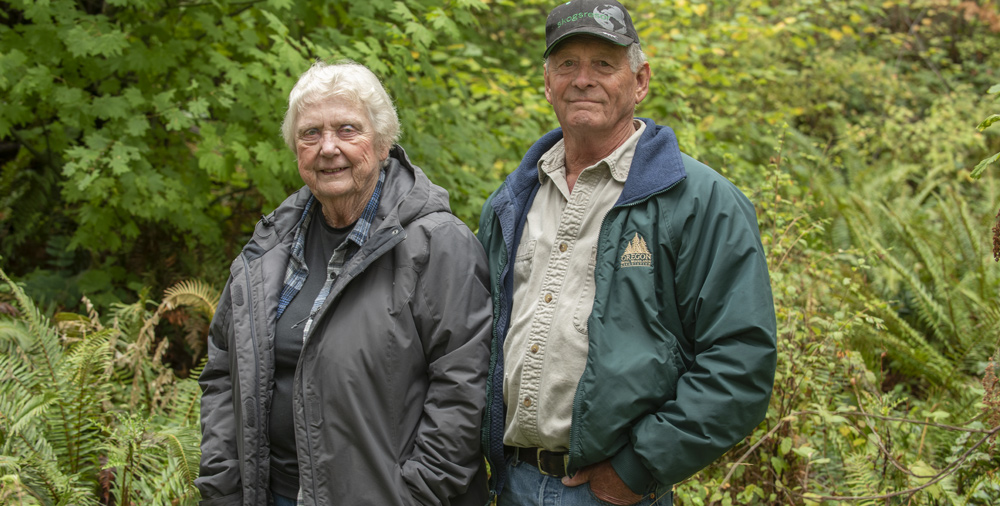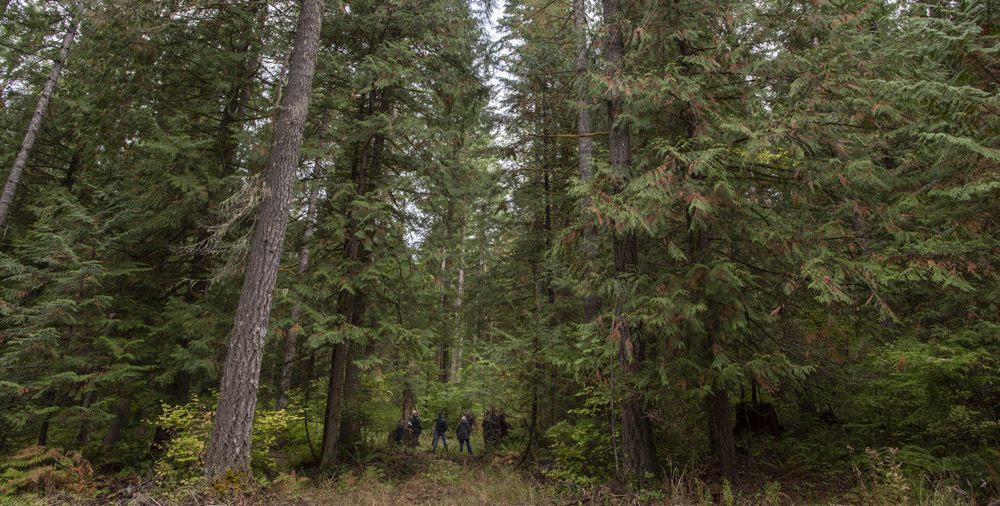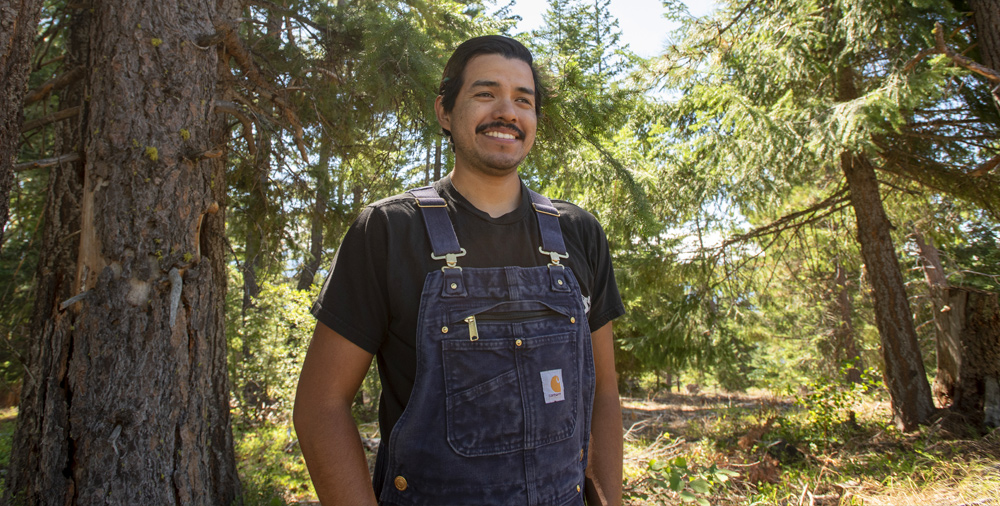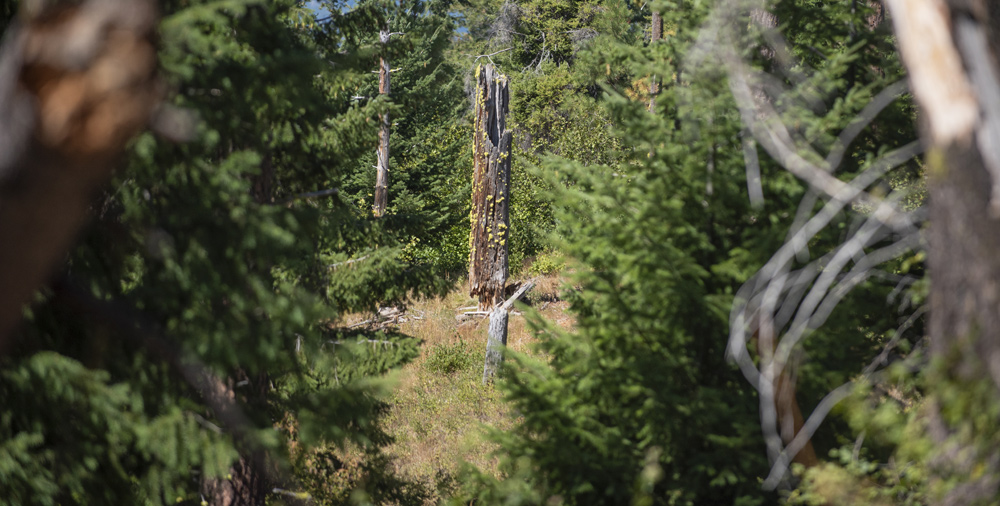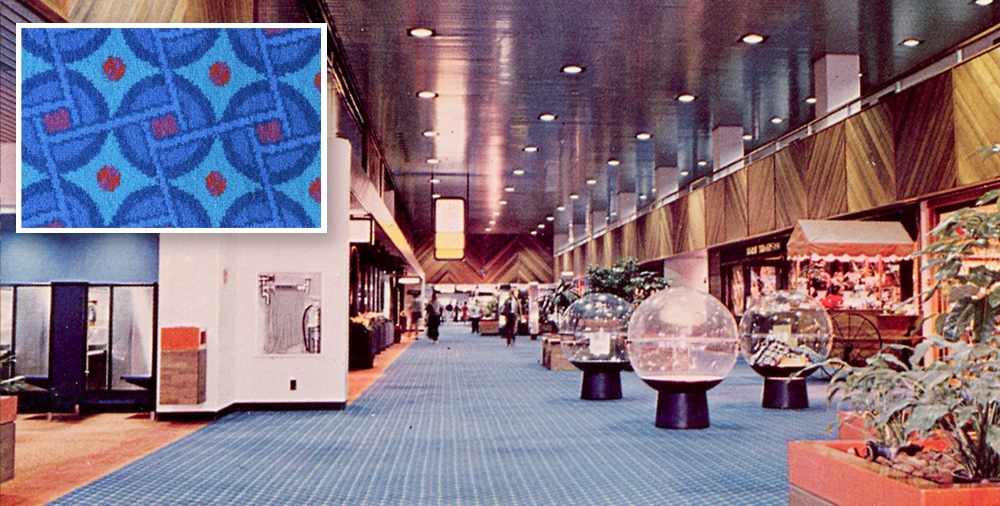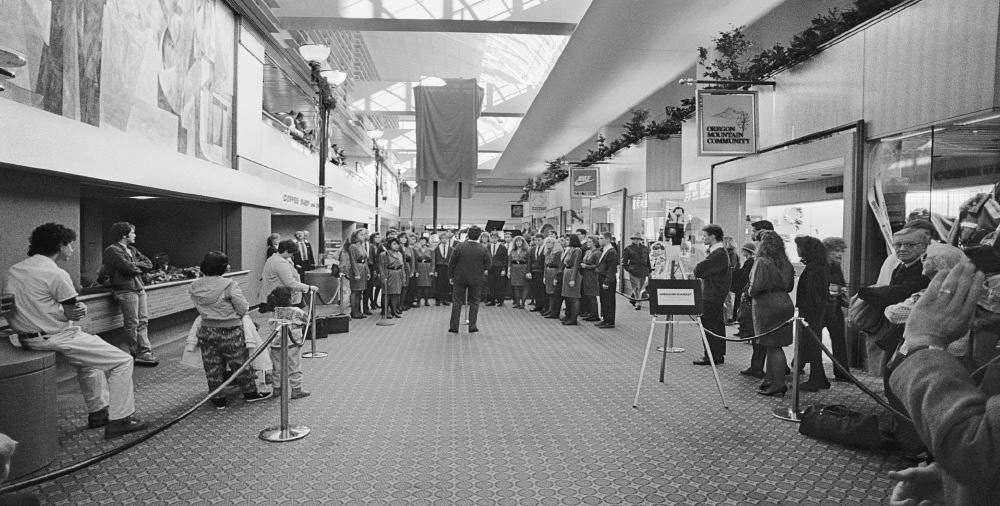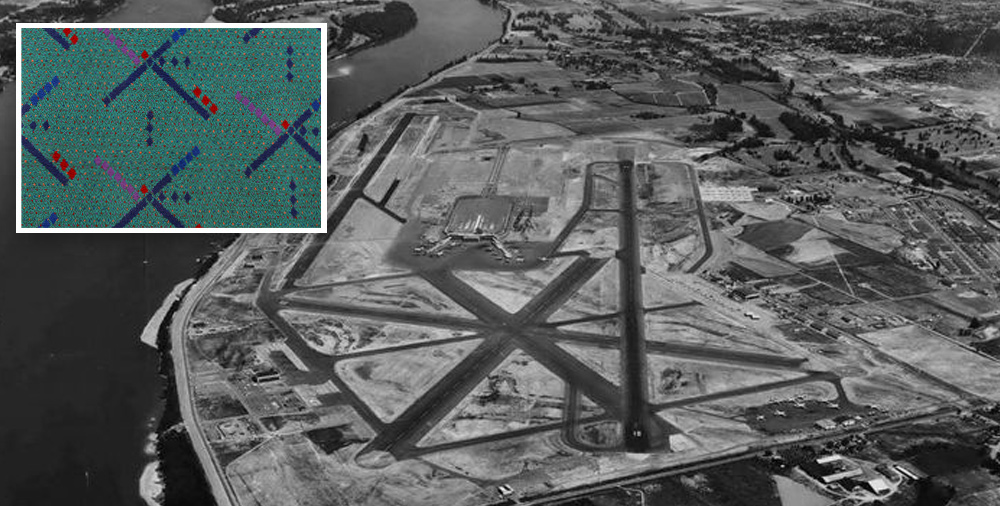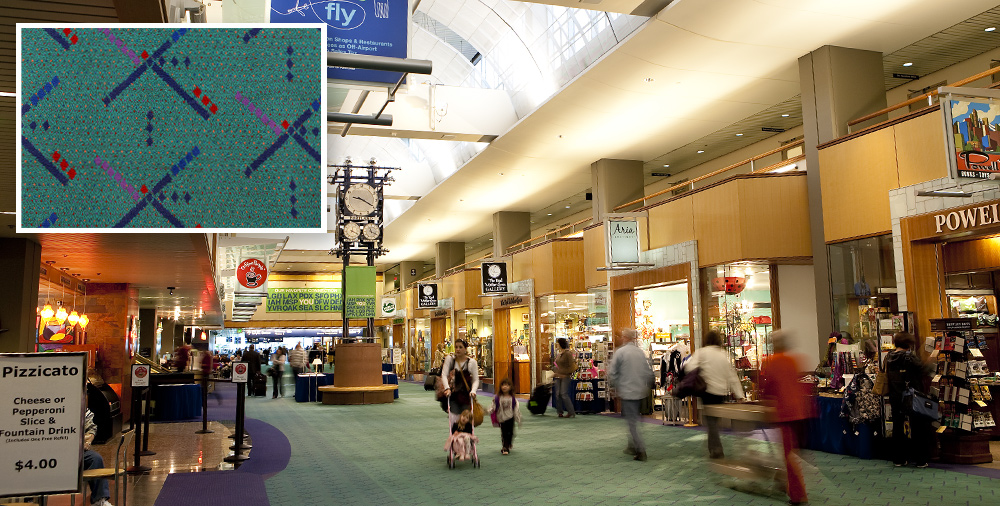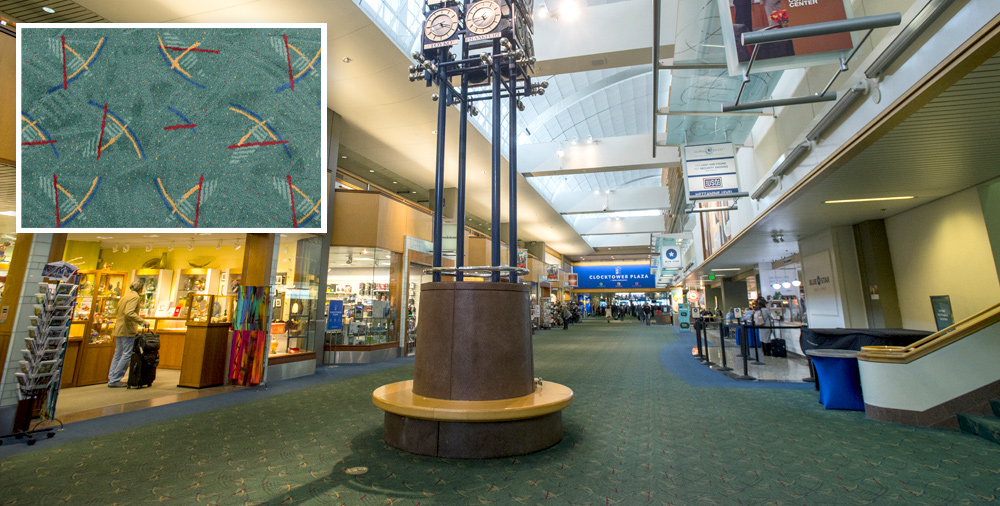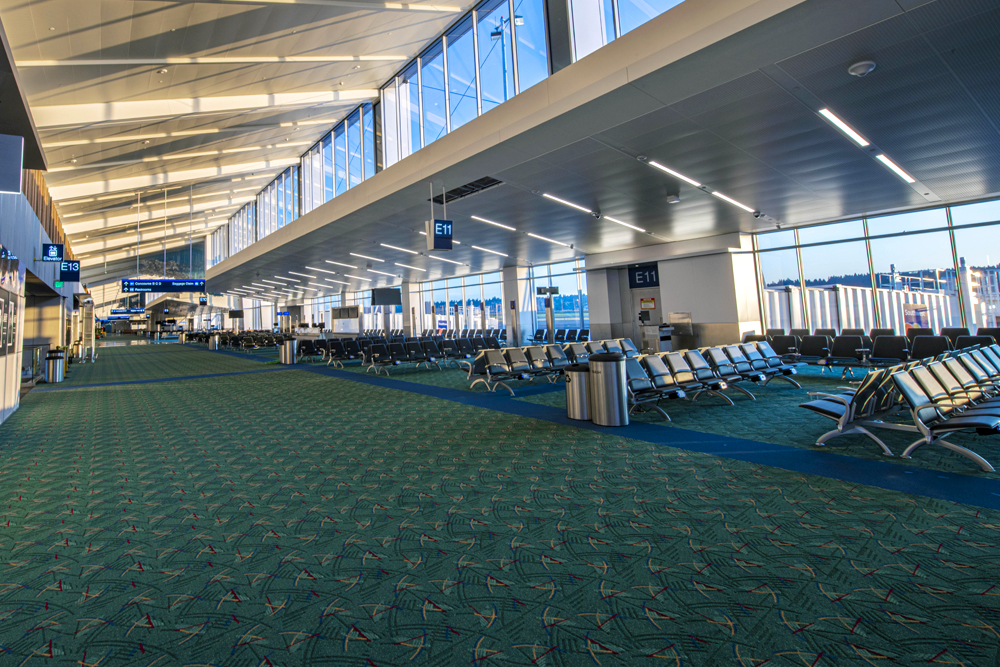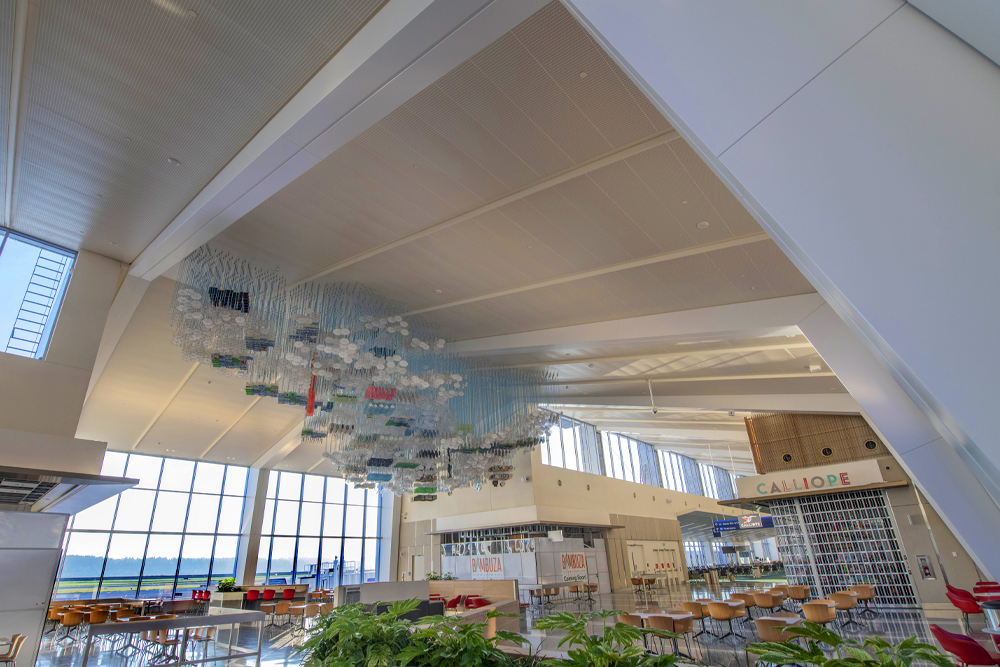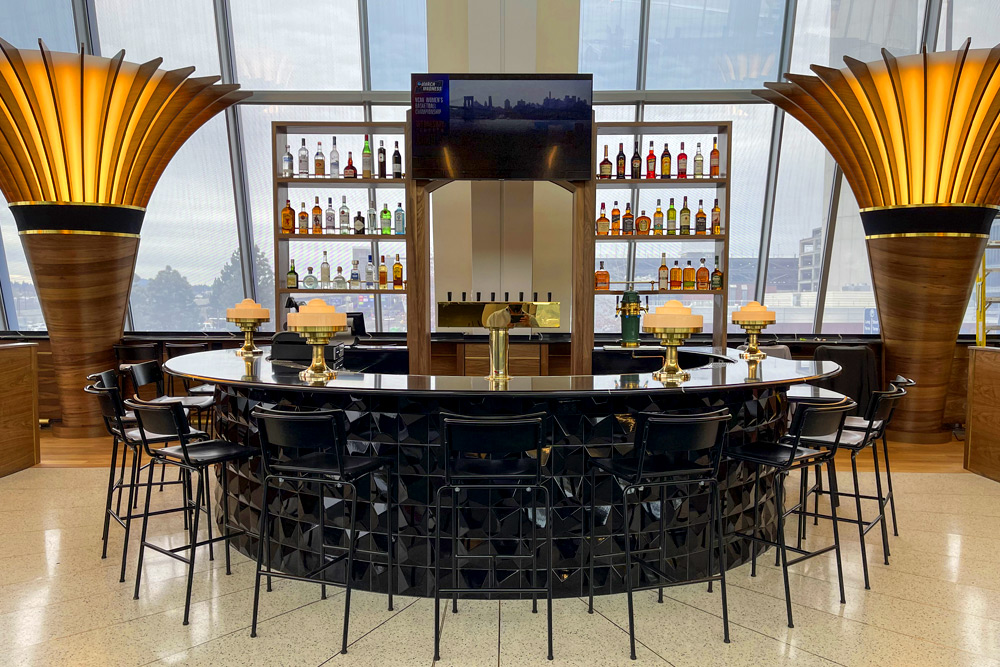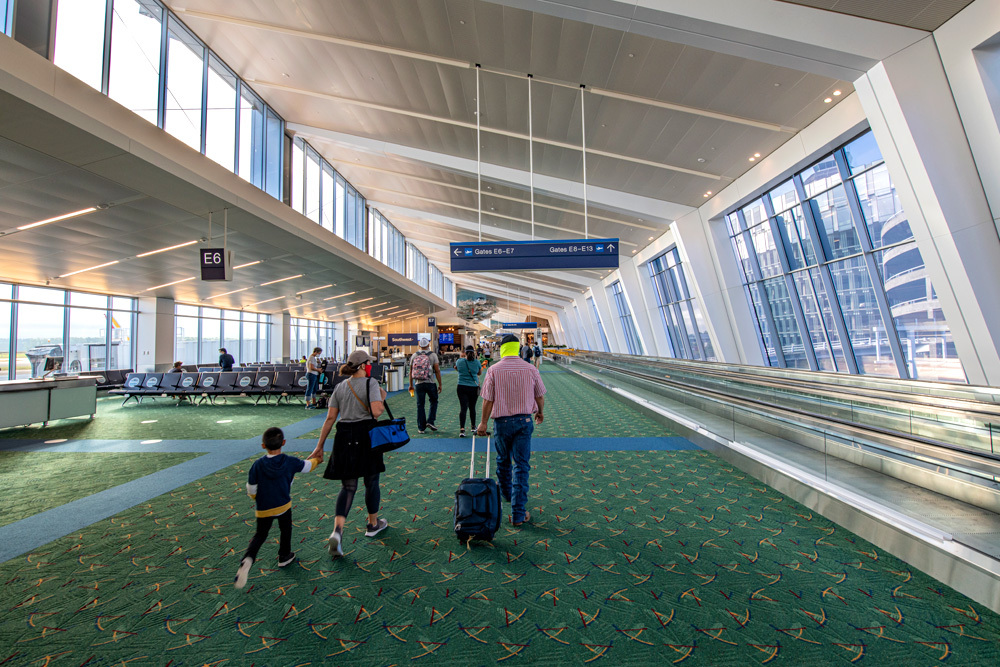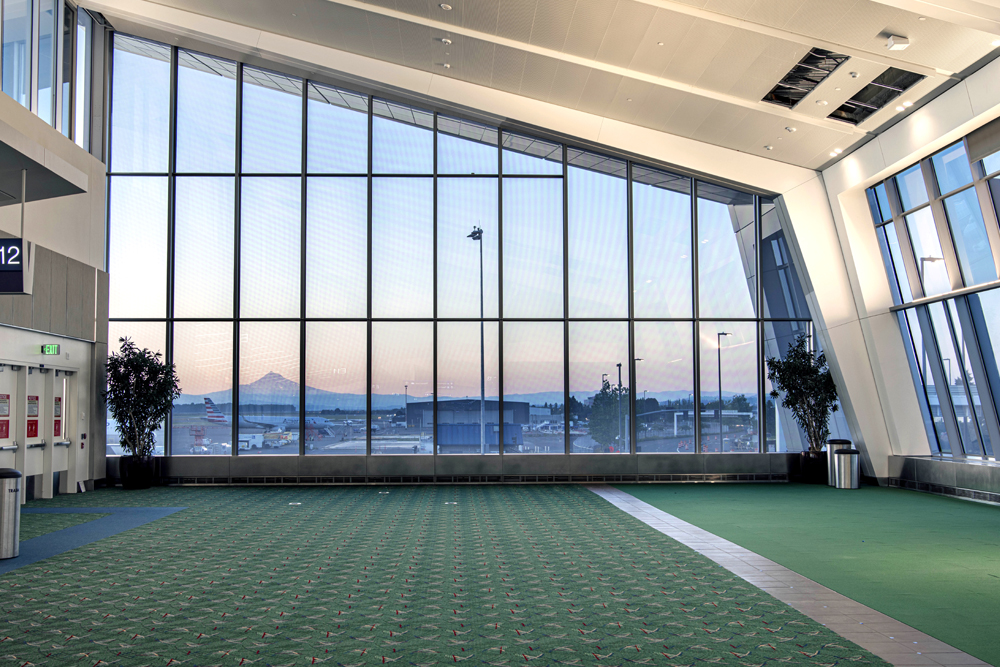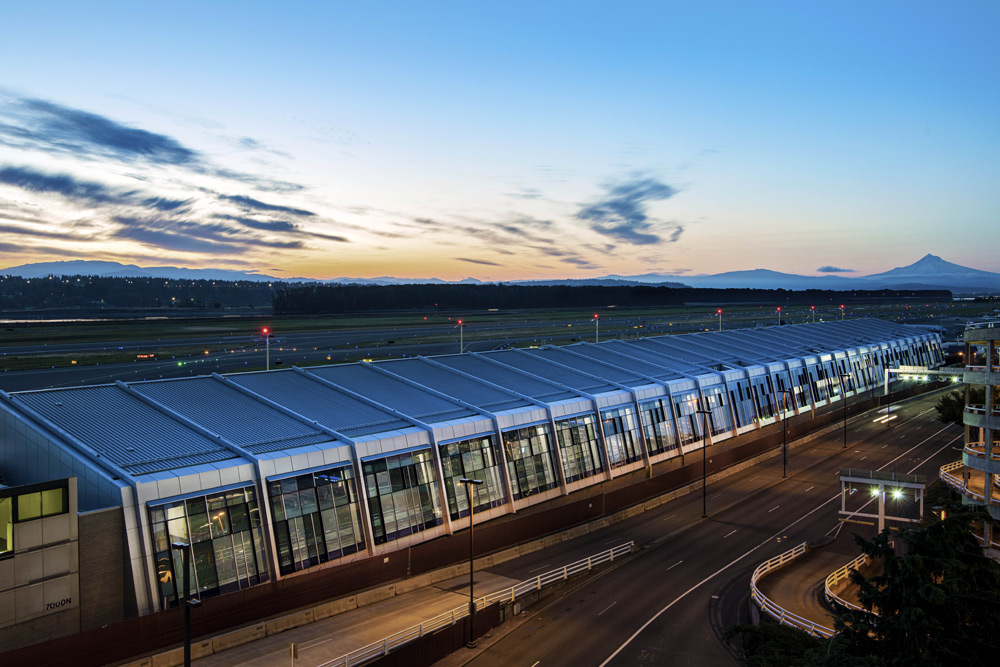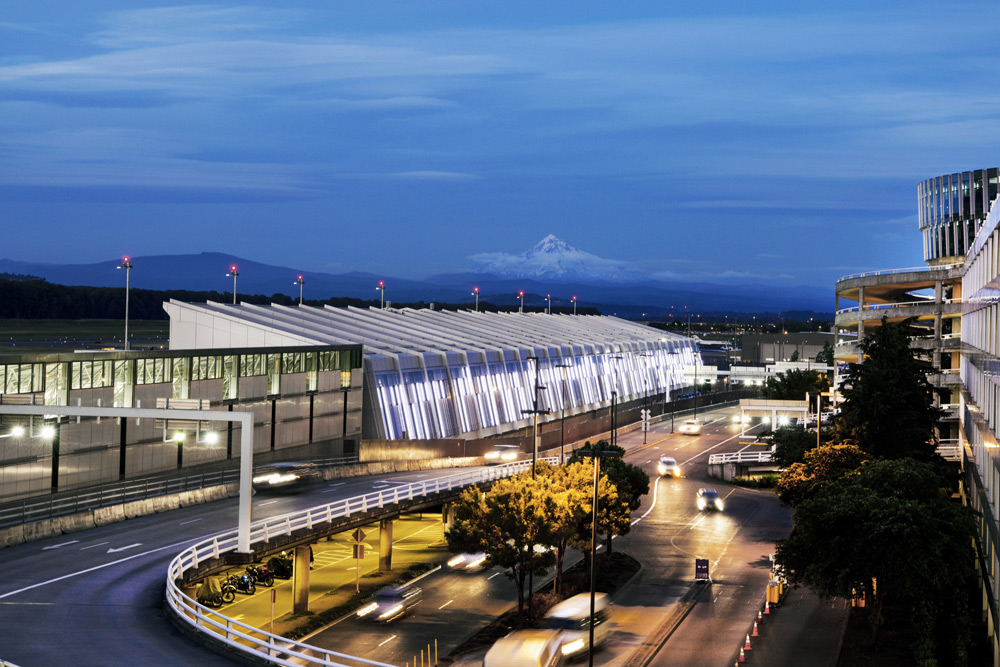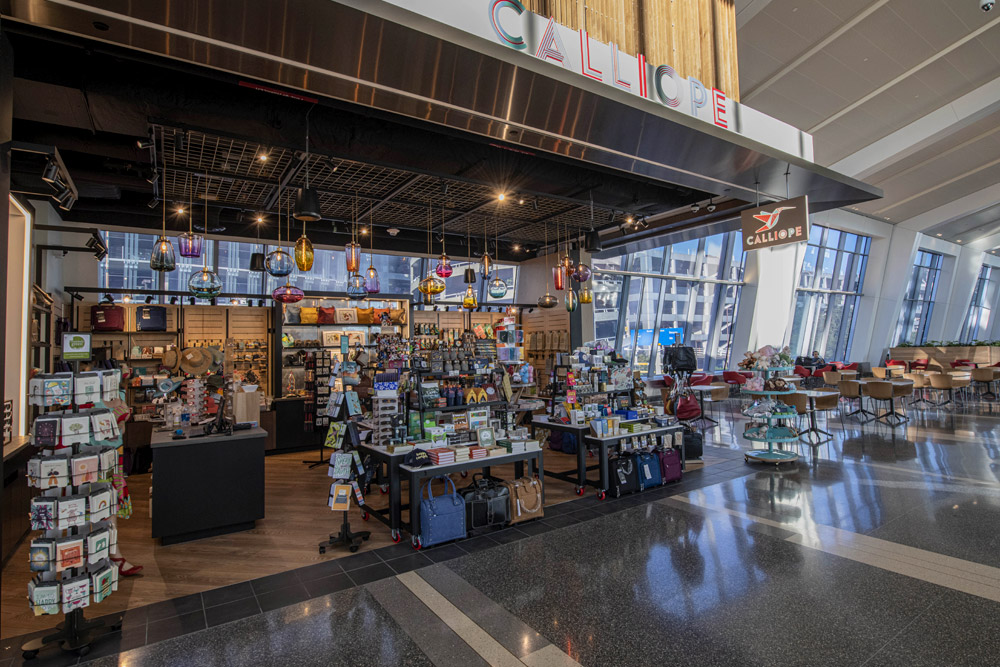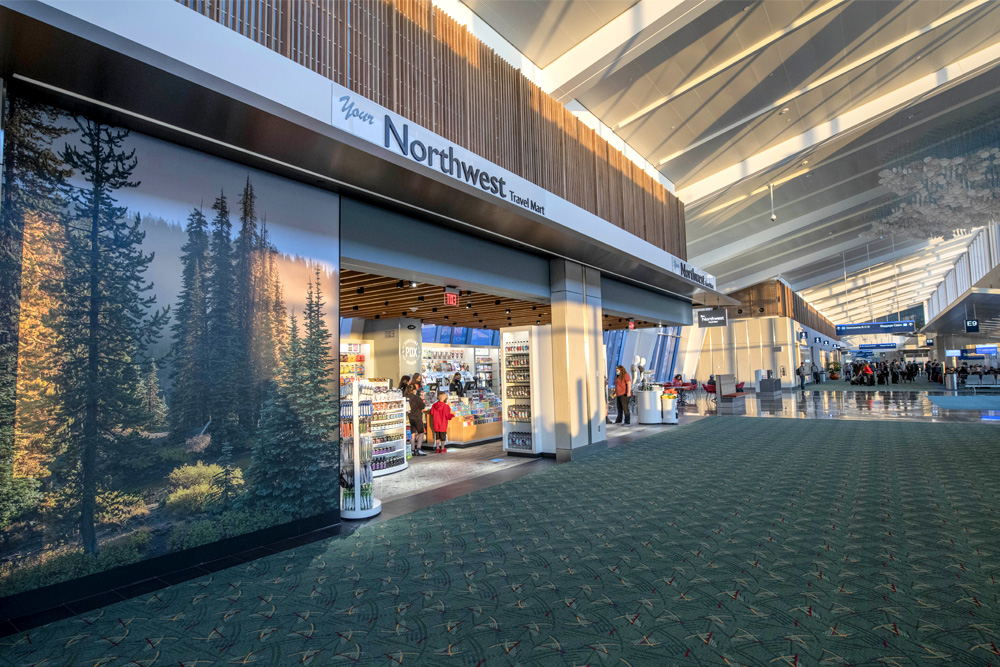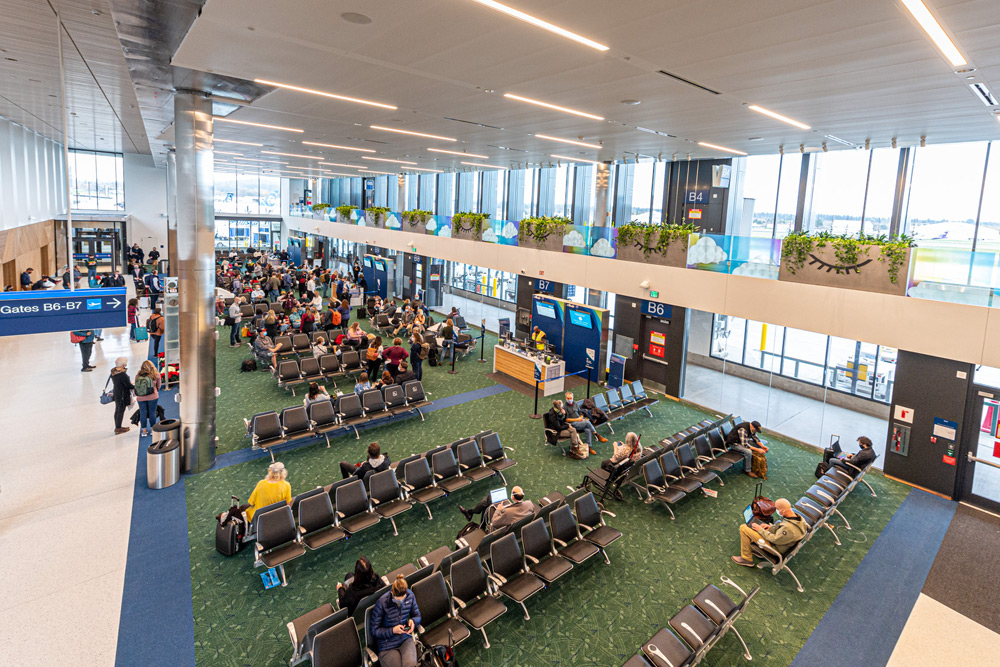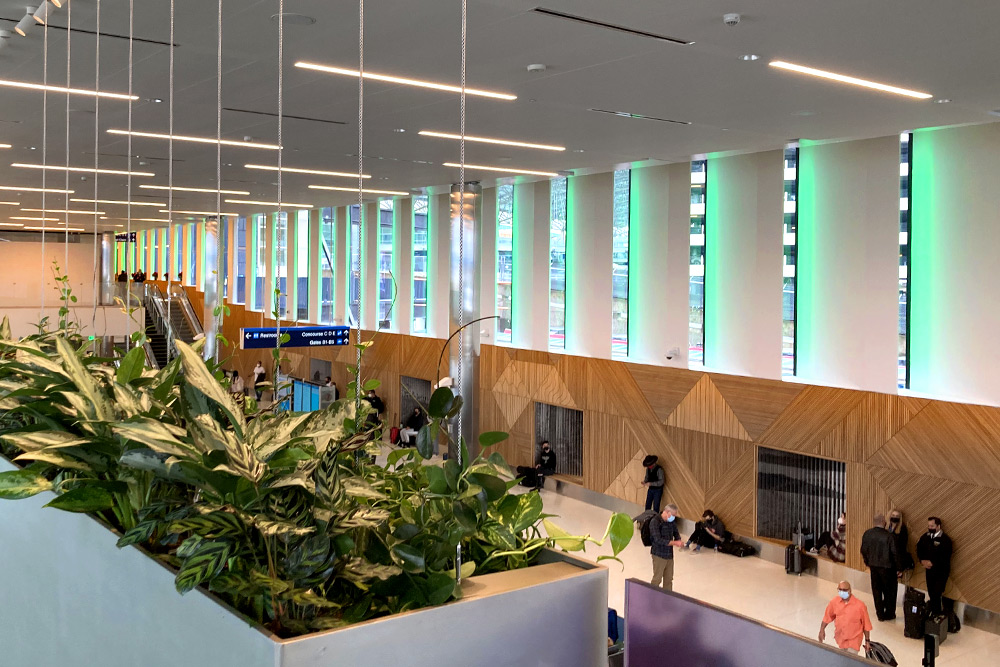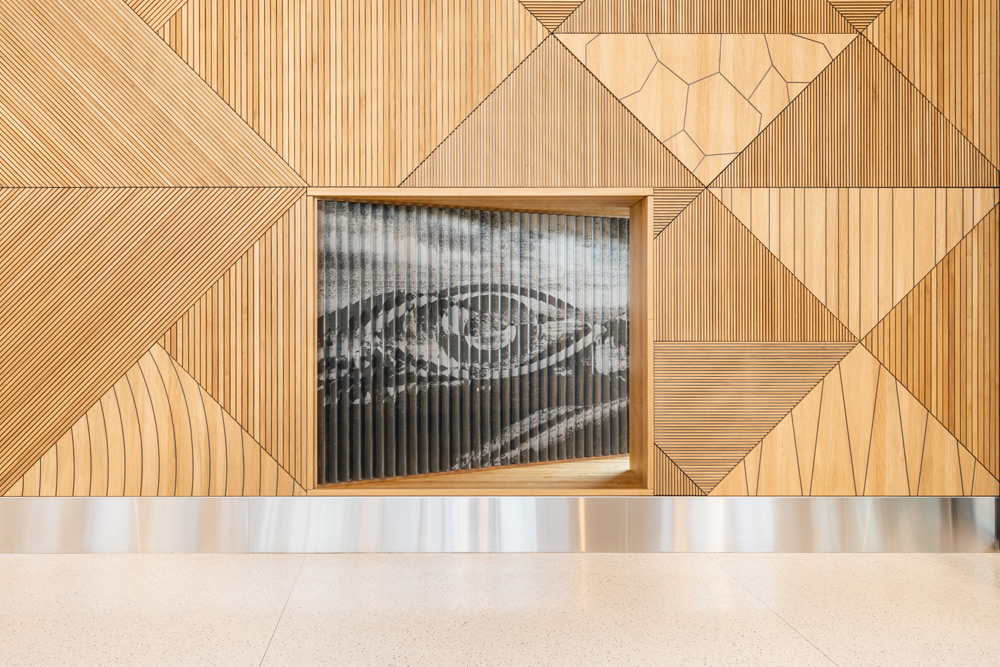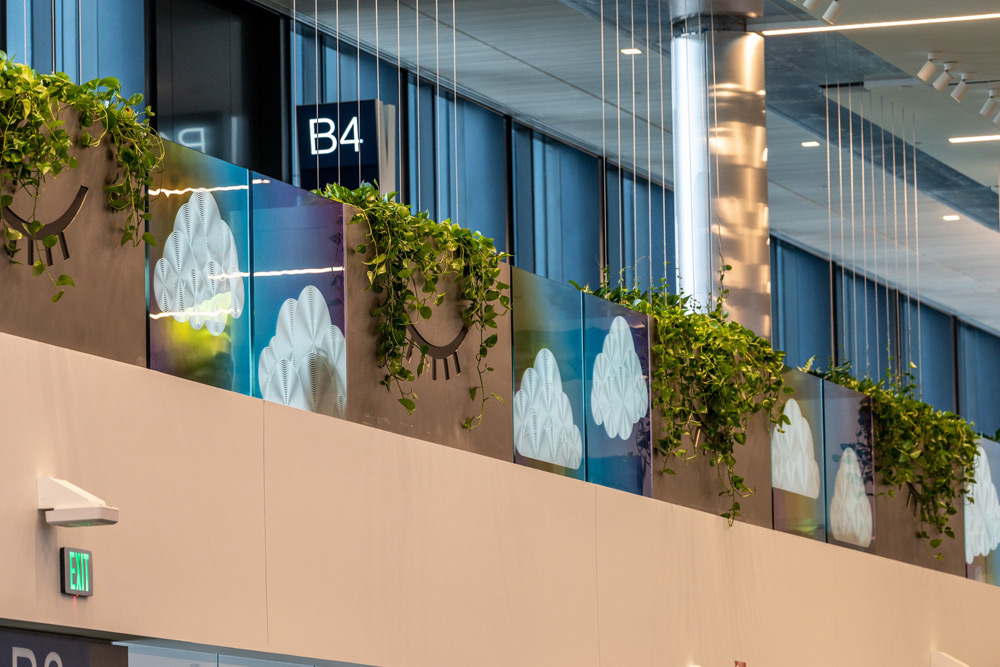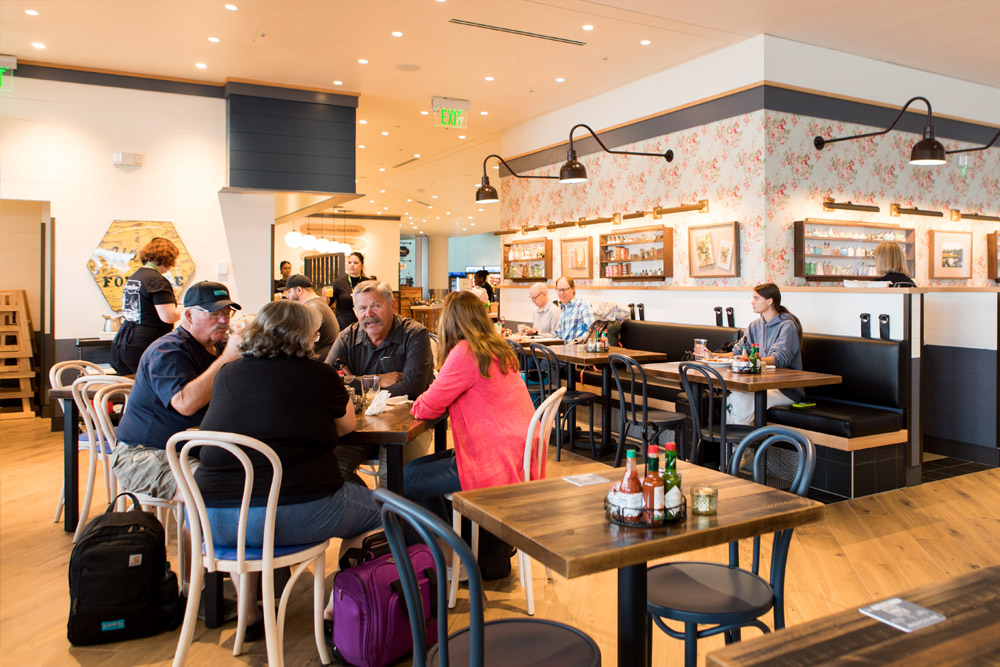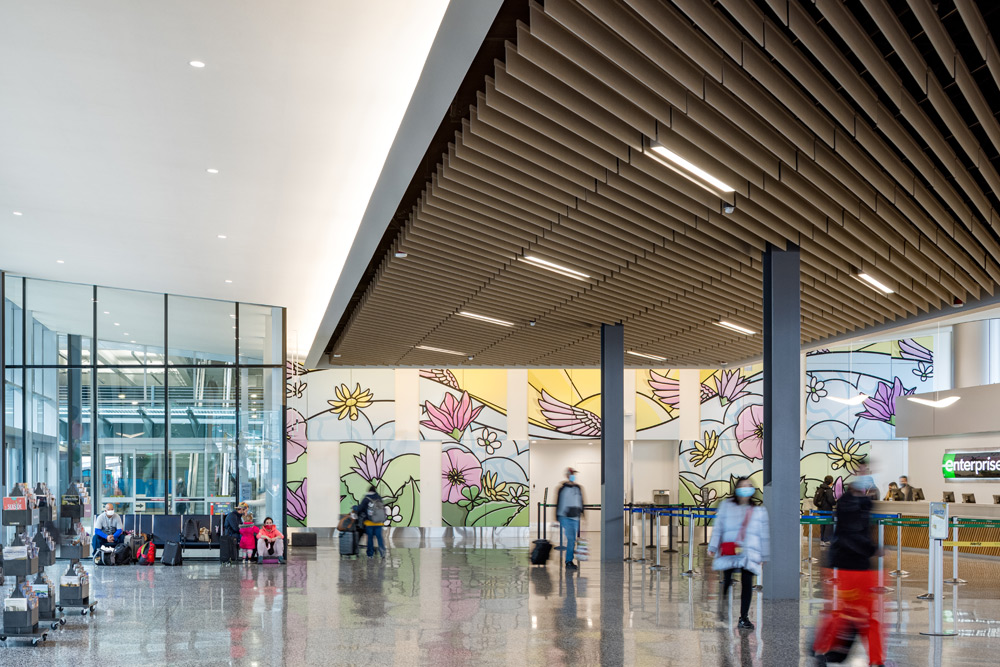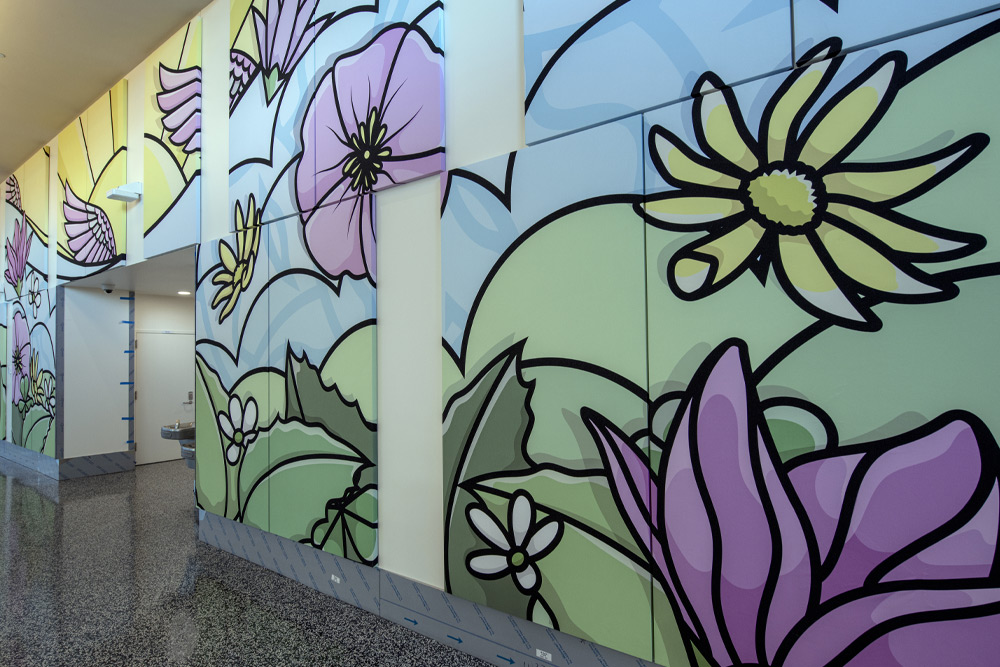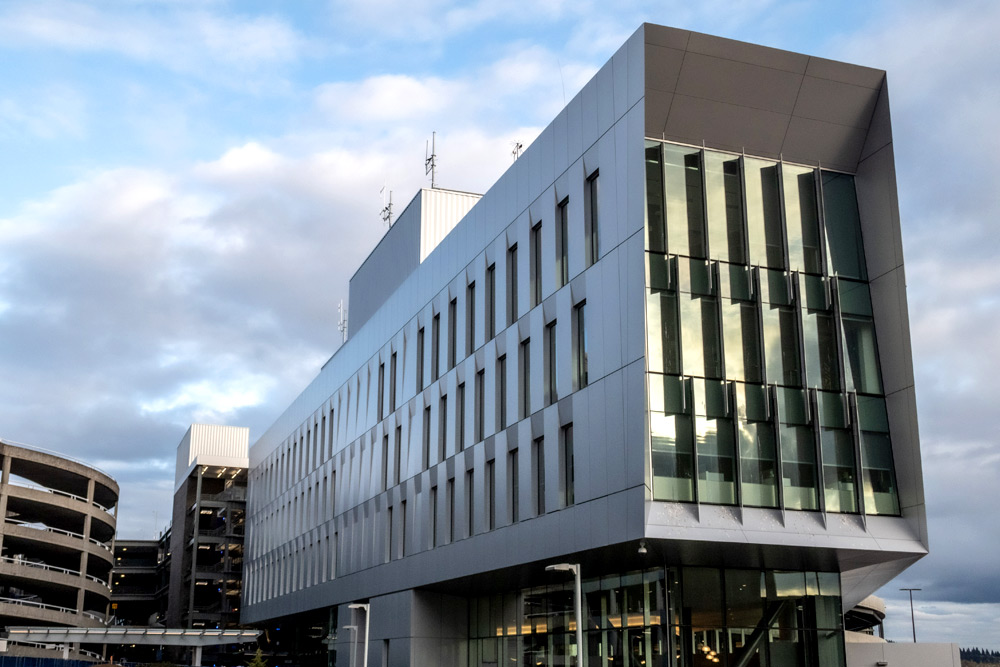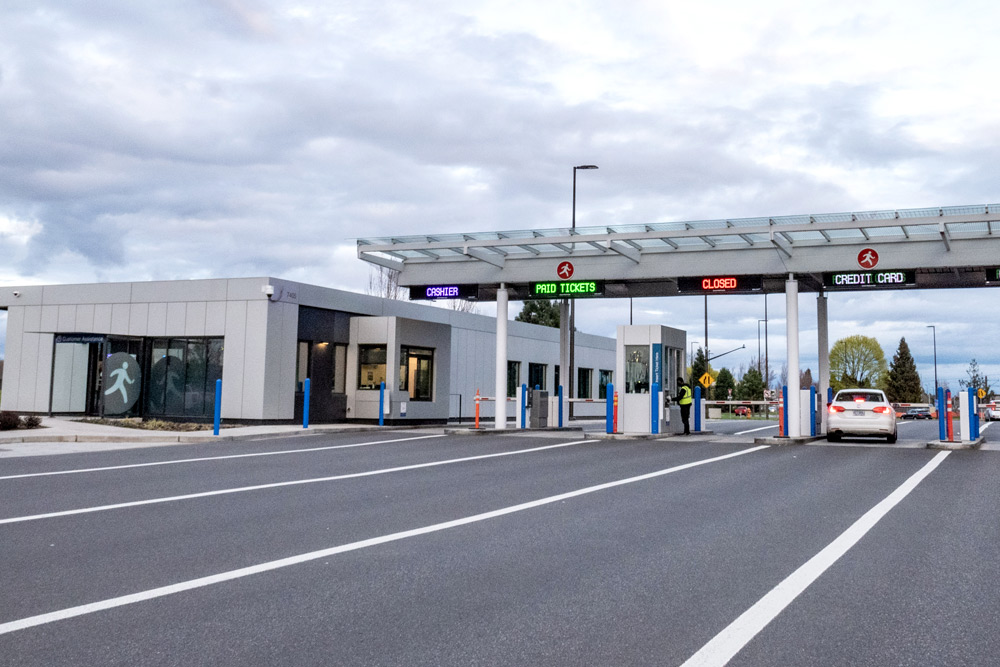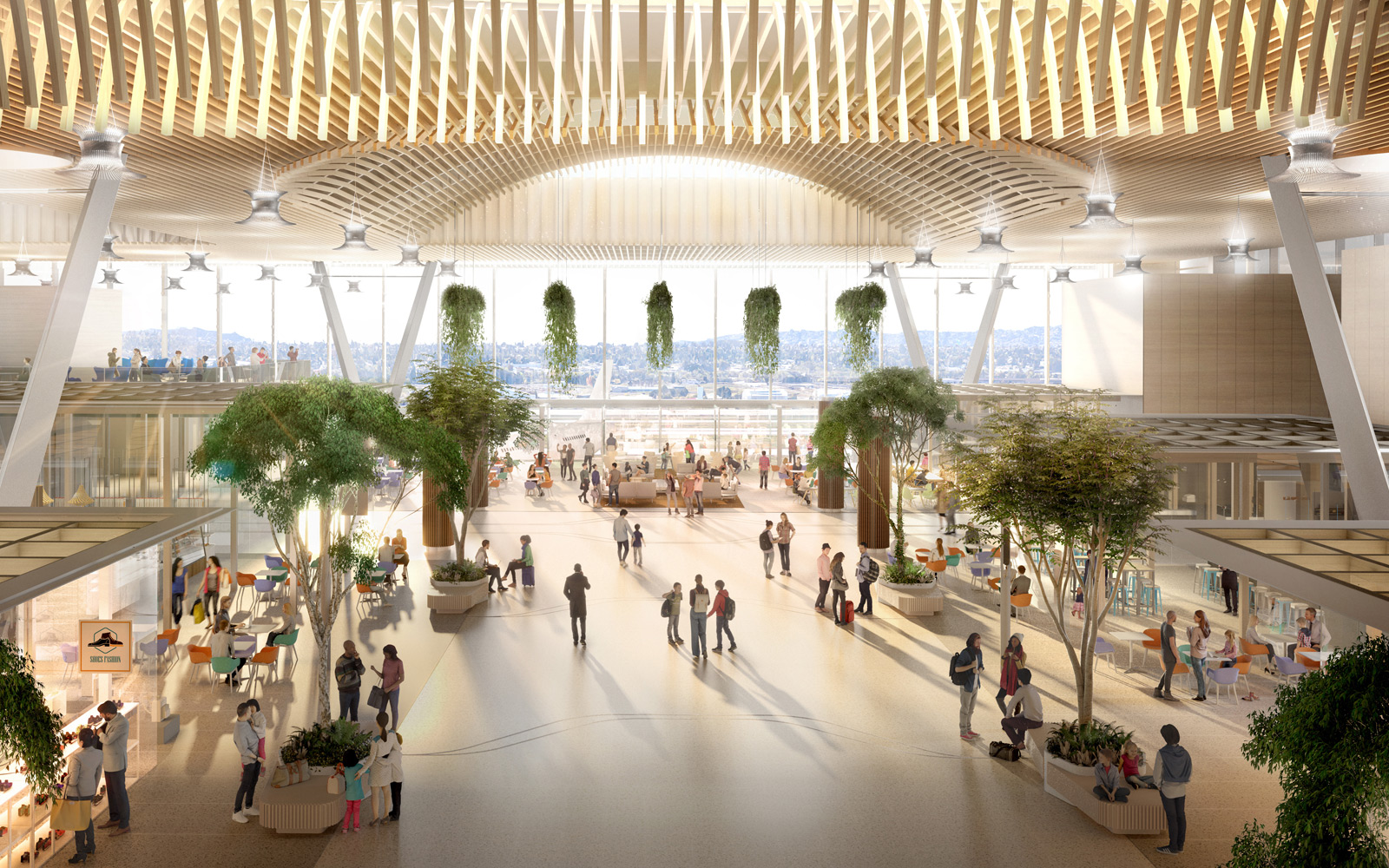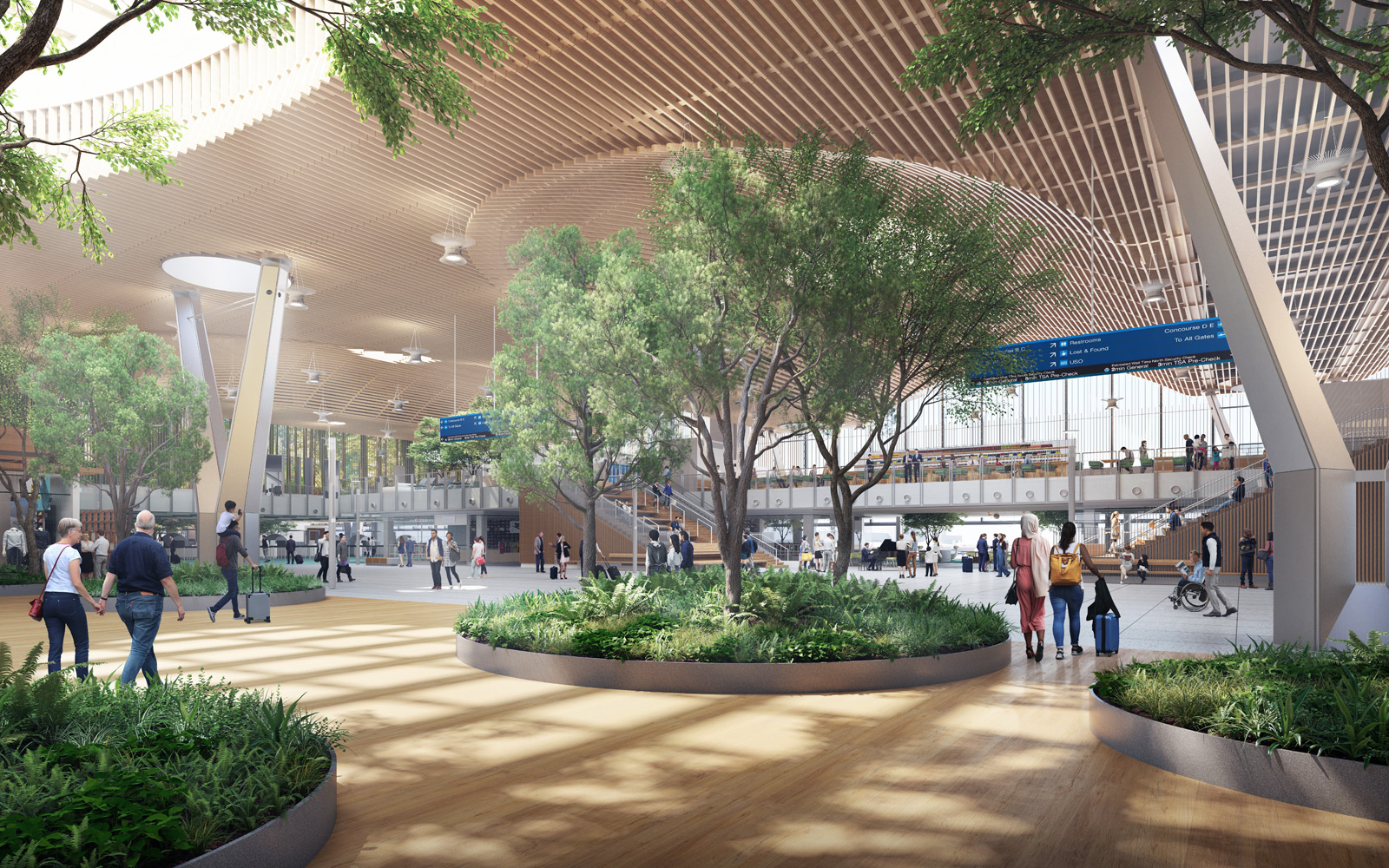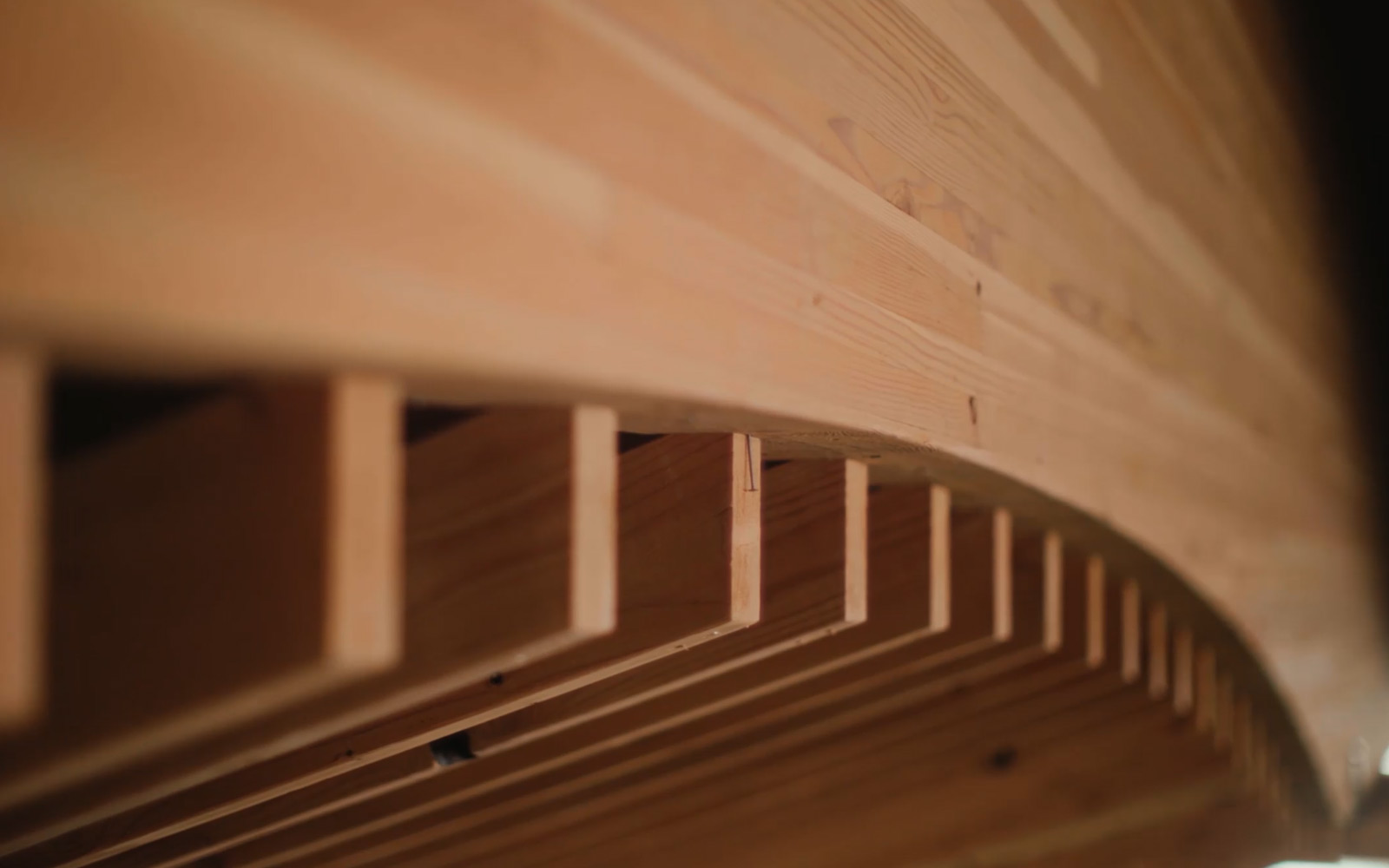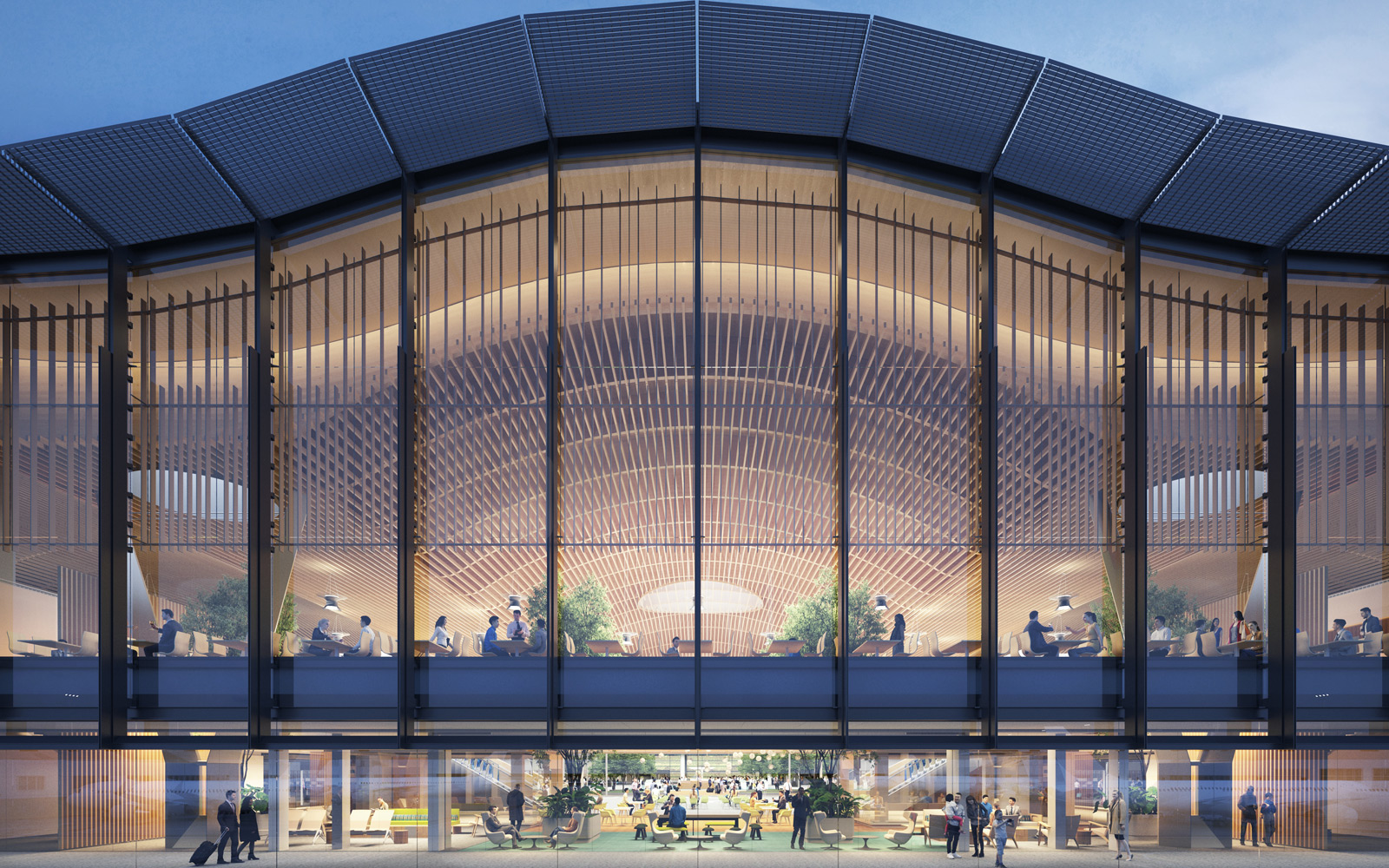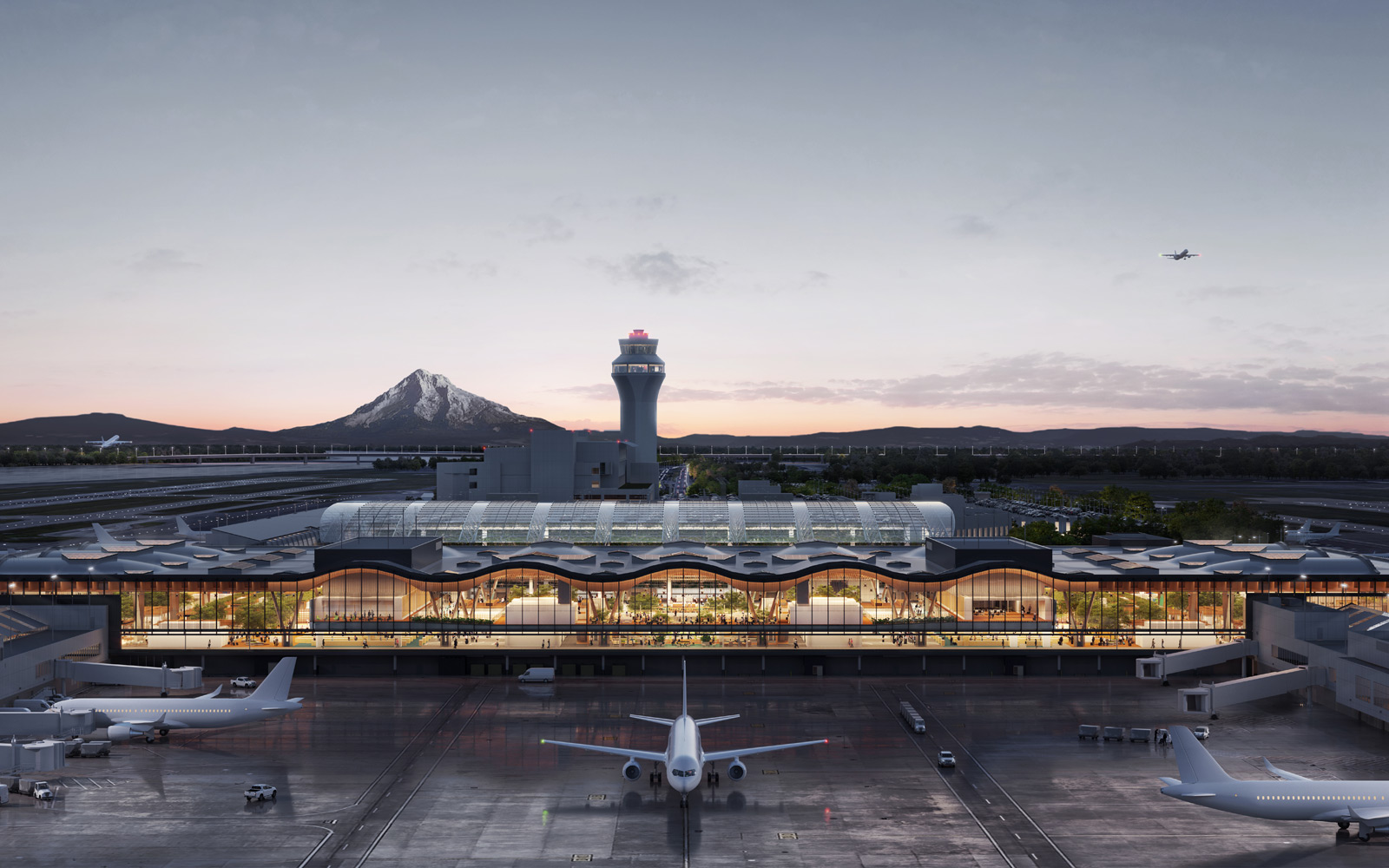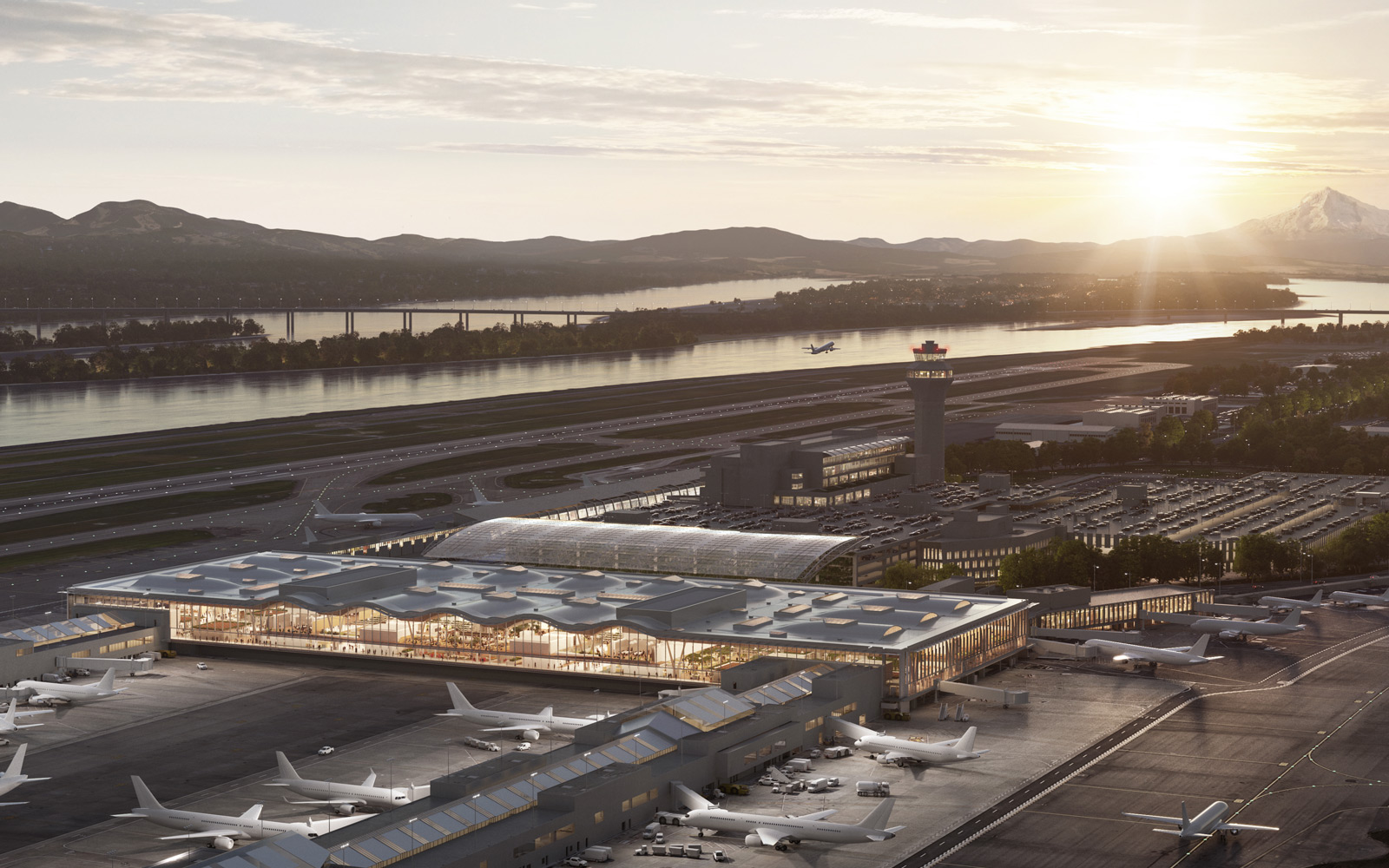Quick update: We said goodbye to Concourse A in fall 2019. See what’s next for PDX.
You’ve probably heard the news already: We’re demolishing Concourse A to make room for more of what you love about PDX.
Known for its dim lights, low ceilings and crowded seating areas, A is overdue for a farewell party. You deserve comfier spaces, tastier food and faster Wi-Fi. And you’re getting it. Starting in November 2019, all Alaska Airlines flights will depart from Concourse C, where you’ll find more local restaurants and spacious spots to recharge before takeoff.
But saying goodbye to Concourse A is bittersweet. We’ve had plenty of memorable times here, and we’re sure you have some stories to share, too.
Surprise wedding proposals, stranded kitty cats, lost fanny packs — a lot of action has unfolded over the years at A’s 14 gates. We’ve rounded up six #GoodbyeA stories from travelers and employees to mark this key milestone in PDX’s history.
Late night fun on the mic
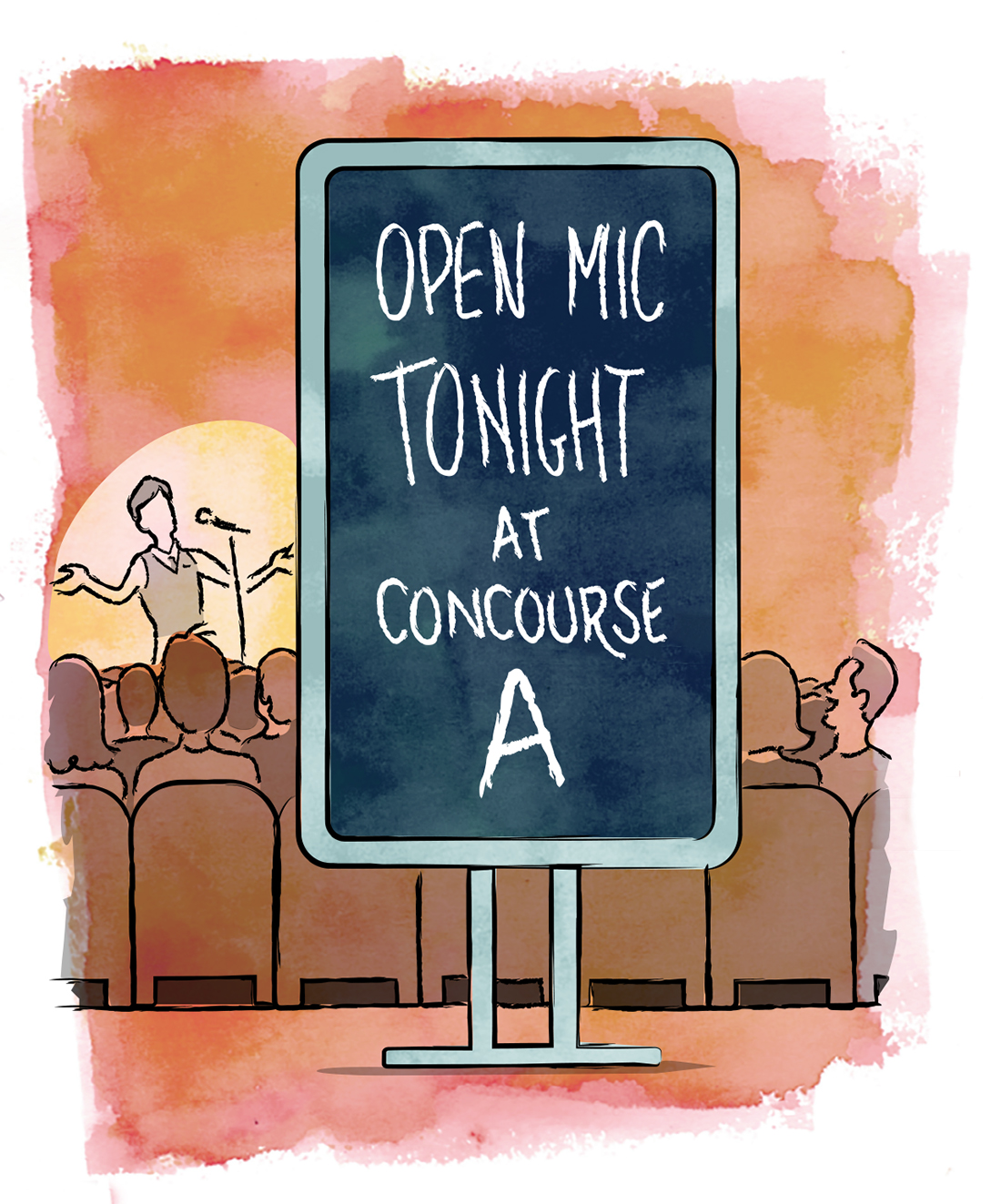
Who knew Concourse A was one of the most happening late-night comedy clubs in Portland? Frequent Alaska Airlines flyers, that’s who. It’s a little-known tradition that A gate agents working the evening shift have some fun when they make announcements on the microphones. Take Kate’s word for it. She logged onto Twitter to praise the performances as “stand-up comedy hour for all the @AlaskaAir ticket counter agents,” who try to outdo each other with wit and sass. “It definitely made the whole atmosphere lighter,” another traveler named Fran wrote in with a compliment, saying “everyone in the boarding area was laughing.” When you think about it, the concourse's dark and crowded spaces do sort of resemble a 1980s-era bar that regularly hosts open-mic events. But thankfully, the show won’t stop when A shuts down. The bar is getting an upgrade, as we make room for a bigger and brighter Concourse B, where you’ll have comfier seats and more food and drink options to enjoy during the impromptu shows.
The old carpet feels like home

“When people say A is dingy, I understand where they’re coming from, but I never think about it that way,” says Mark Mohammadpour, who describes himself as “not quite a million-mile flyer.” As a former PR executive turned wellness entrepreneur, Mark has spent much of his career traveling in and out of PDX for work, with many of his flights departing from A. He’s grown to adore the airport’s most dated corner. “It just feels like home,” he reminisces, specifically recalling a stretch of old carpet in Concourse A near the escalators, where he’s taken a few shoe selfies. “Though, of course, it’s not just the carpet; it’s the surroundings, the local brands, the local art,” he says. The good news? More of that neighborhood character is coming. “Screen Door [opening in Concourse B in 2021] is a great representation of that,” Mark adds. “Whether visitors are flying in from another state or country, they can see in a few minutes what Portland is like just by walking around the airport.”
Kitty needs litter now
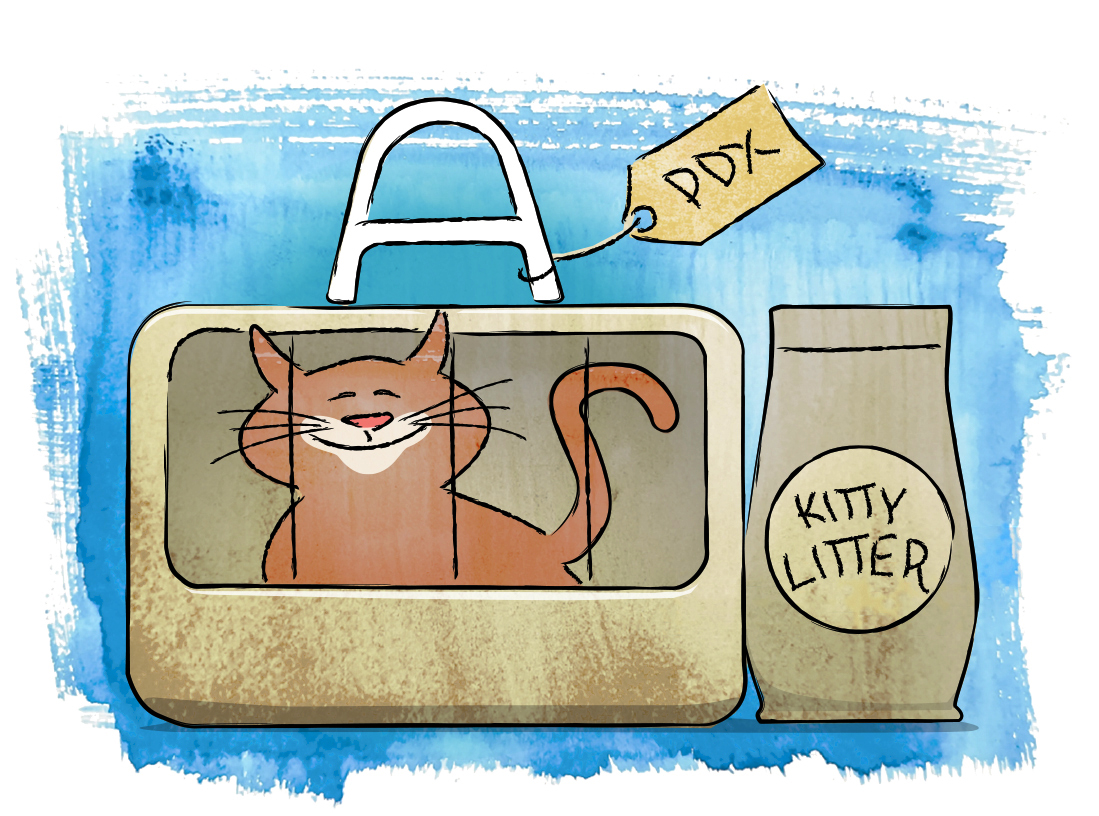
Nick Lisac gets a lot of questions. As a ground service team captain at PDX, he organizes agents to keep the A gates running smoothly, orchestrating anything from loading and unloading suitcases to stocking snacks on airplanes between flights. But one night, a call from baggage claim surprised him: Do you have any cat litter? “At first I’m like, cat litter? Holy smokes,” Nick says. “It’s one of those odd questions, not about airplanes, bags or people. But cat litter.” You see, a family of six was relocating with their pet from Texas to Seattle, and they were delayed till the next day at PDX due to a gnarly winter storm. Nick understood the implications: This tired cat needed some litter or it wouldn’t be a pleasant stay for the family at the nearby hotel. “I called baggage claim back and said I’d get some litter,” he recalls. “I never did meet the family. They were probably out walking their cat.” Still, he’s pretty certain that kitty purred.
Not lost in translation
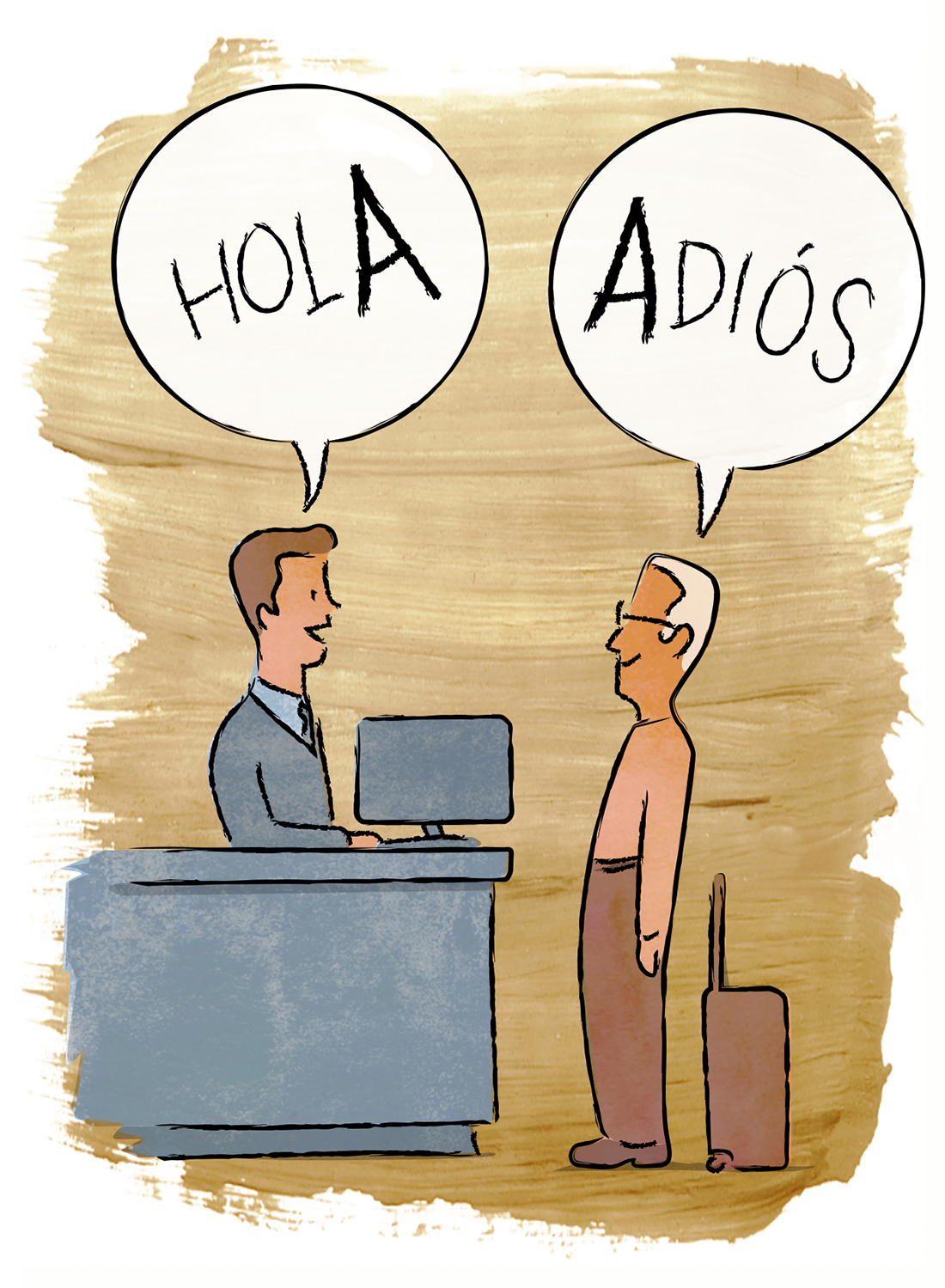
It’s always frustrating when you miss a flight, especially if you make it to your gate minutes after the last boarding call. But a few unlucky factors meant one elderly man stranded at Concourse A had a more stressful experience than most travelers do: He was stuck at the airport alone. It was late in the evening. And language barriers made it difficult for him to communicate with the airport staff. That’s when the multilingual Horizon Air employee Frankie Torres entered the scene. He gracefully stepped in to serve as the traveler’s translator. Frankie delivered the bad news that the flight had already departed, rebooked him for the next morning and even called the traveler’s family to explain the situation. But Frankie didn’t stop there. Knowing that the man was still feeling lost, he reserved a room at a nearby hotel, chauffeured him to the lobby and served as the interpreter for the front-desk staff. Rumor is that older man did a little happy dance when he boarded his flight the next day.
Fannypack: lost and found

One of the great mysteries of our era is the resurgence of the fanny pack. Yes, it’s 2019 and the fashion-forward travelers at PDX seem to have forgotten the long-ago days of 2010 when it was a little embarrassing to wear a fanny pack in public. But our pals Karen and Jim remember June 2010 all too well. That’s when they lost their prized pack at the Concourse A Travel Mart. This, of course, wasn’t a novelty accessory that Karen had purchased at a hip vintage store on Hawthorne; no, she had crammed it full of cash, credit cards and her driver’s license. (We’re omitting Karen’s last name to protect the earnest.) It’s no wonder that panic struck her when she was waiting for her ride and noticed her pack was missing. Thankfully, airport employees found and returned it to airport security, with the valuables intact. “I seriously doubted I would be that lucky,” Karen says. “I can't say thank you enough to those employees and the Port for their care and concern.” So sport that fanny pack with pride, Karen. It’s fashionable now.
Happily ever after

You may not think of Concourse A as an especially romantic corner of PDX. But you’re not Sami Petricka, an airport employee whose partner, semi-professional soccer player Cameron La Fleur, proposed to her while she was on break. “I had just gotten done with a flight and was charging inside to grab some quick food. I thought it was weird that I was calling him and he wasn’t answering,” Sami laughs. “I sent him a message: ‘Answer your phone, you jerk, I’ve only got 10 minutes.’” That’s when Sami heard Cameron announce her name on the speaker system. “My heart started pumping — that’s probably all you could hear throughout the whole concourse,” recalls Cameron, who had wanted to make a grand romantic gesture when he asked her to marry him. He purchased a flight so he could pass through security and meet her on her break. “We’re all about surprises,” Sami says, “so when I heard his voice, I knew he got me good.” Cameron knelt down. The entire concourse applauded. Sami blushed and, of course, she said yes.
